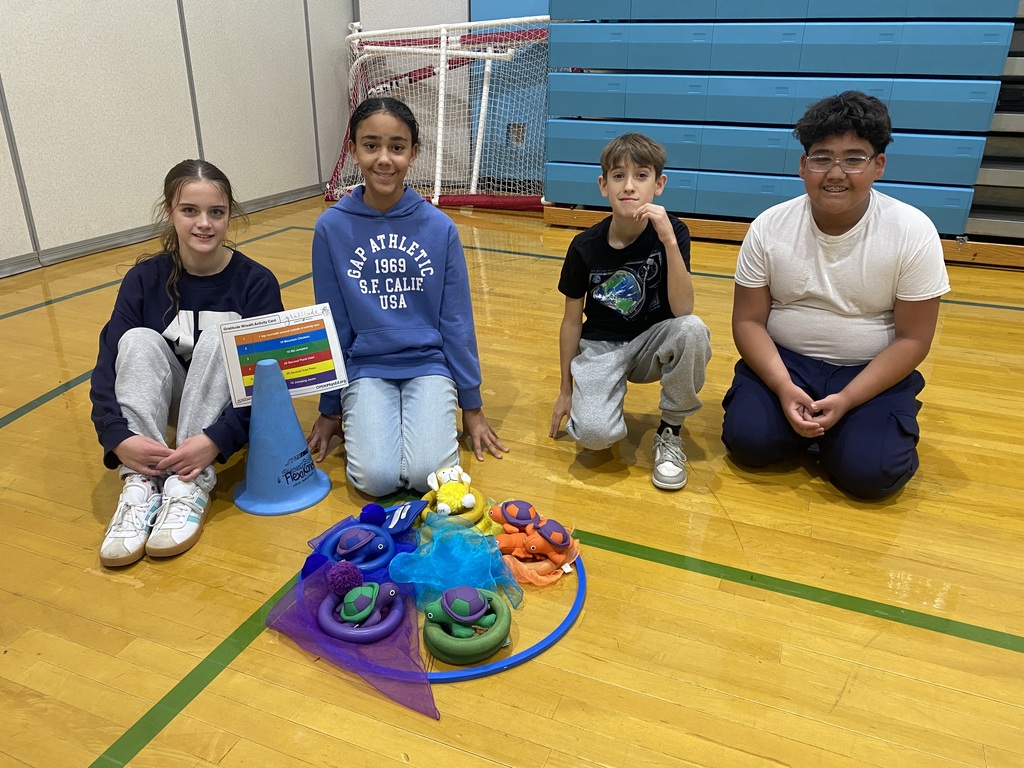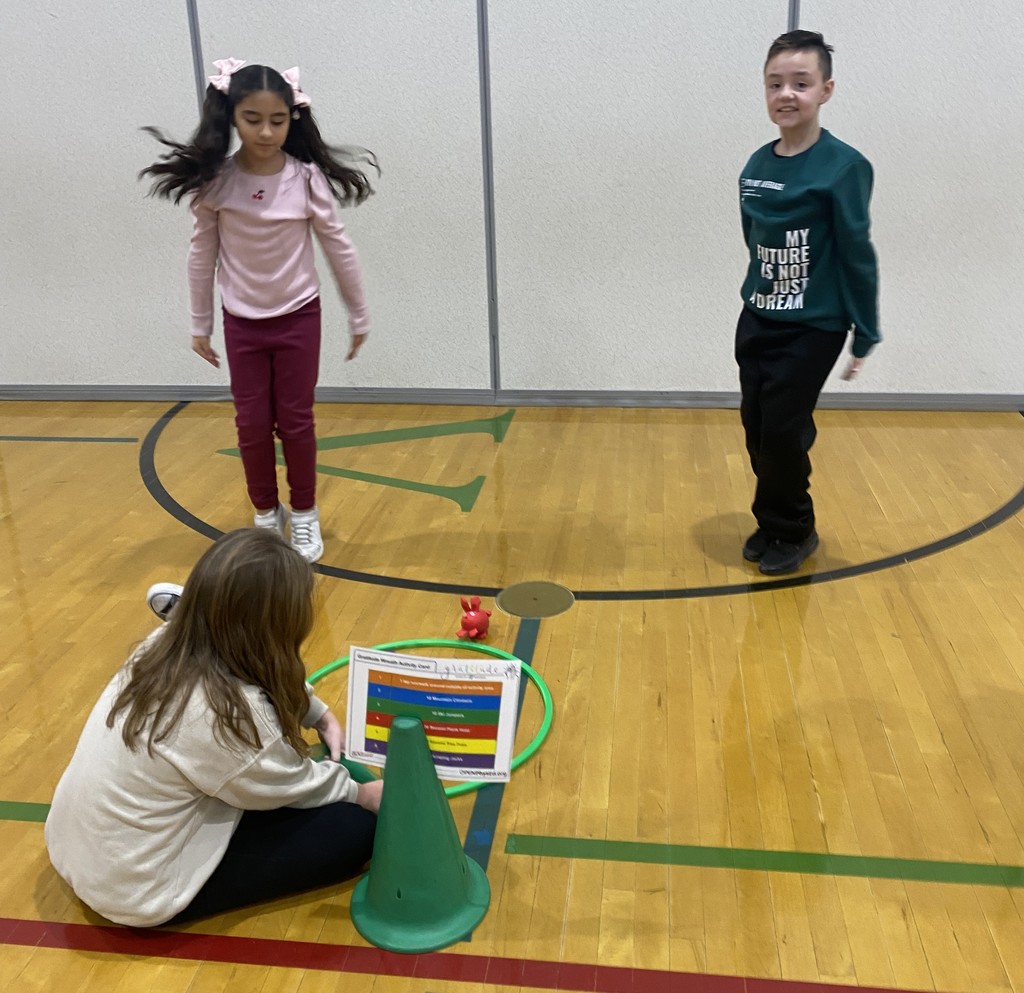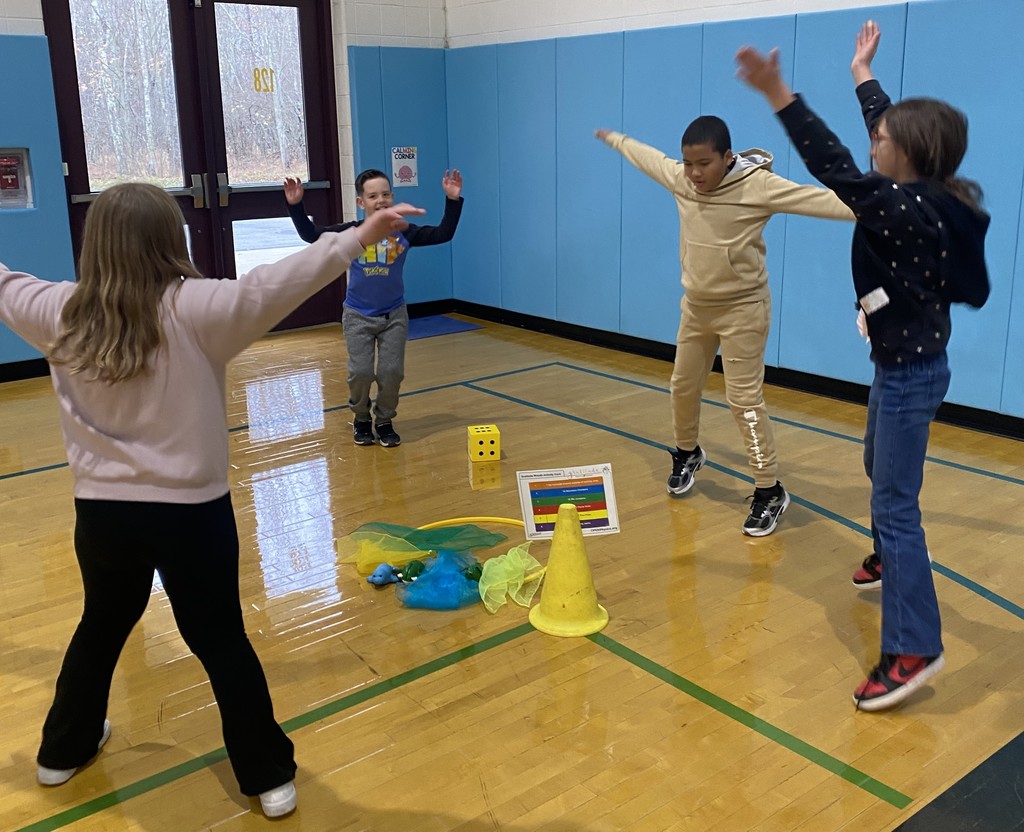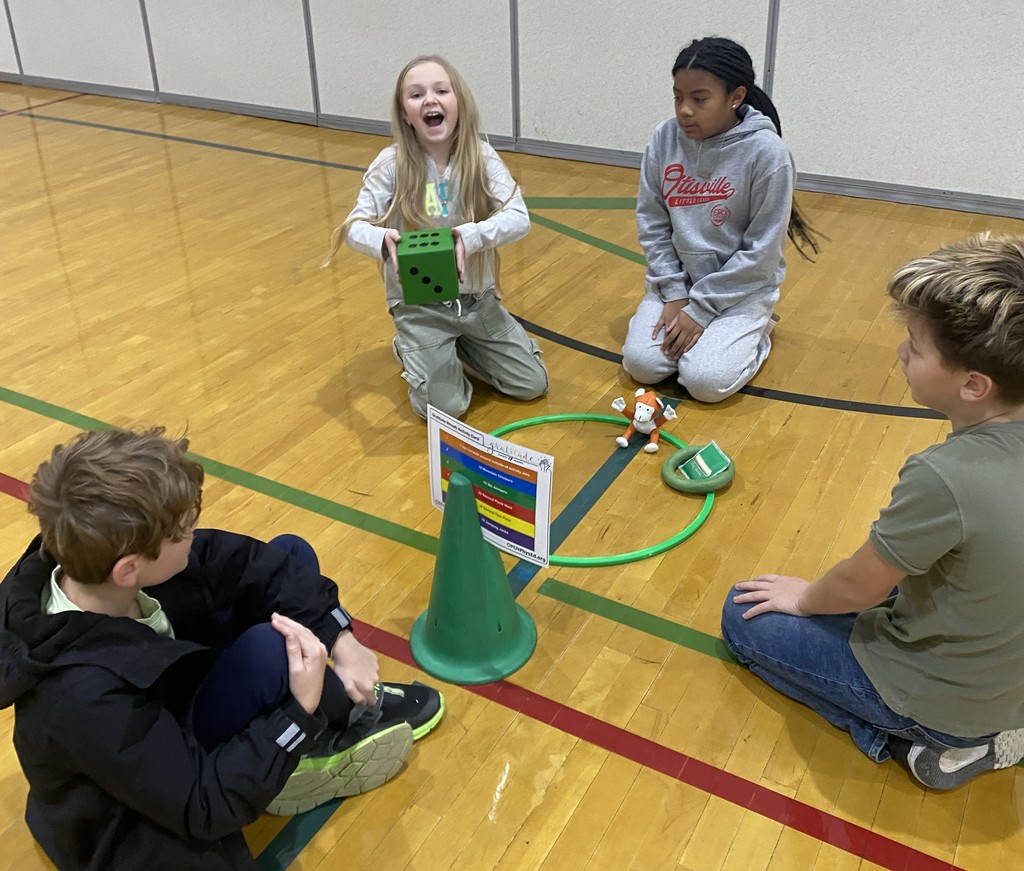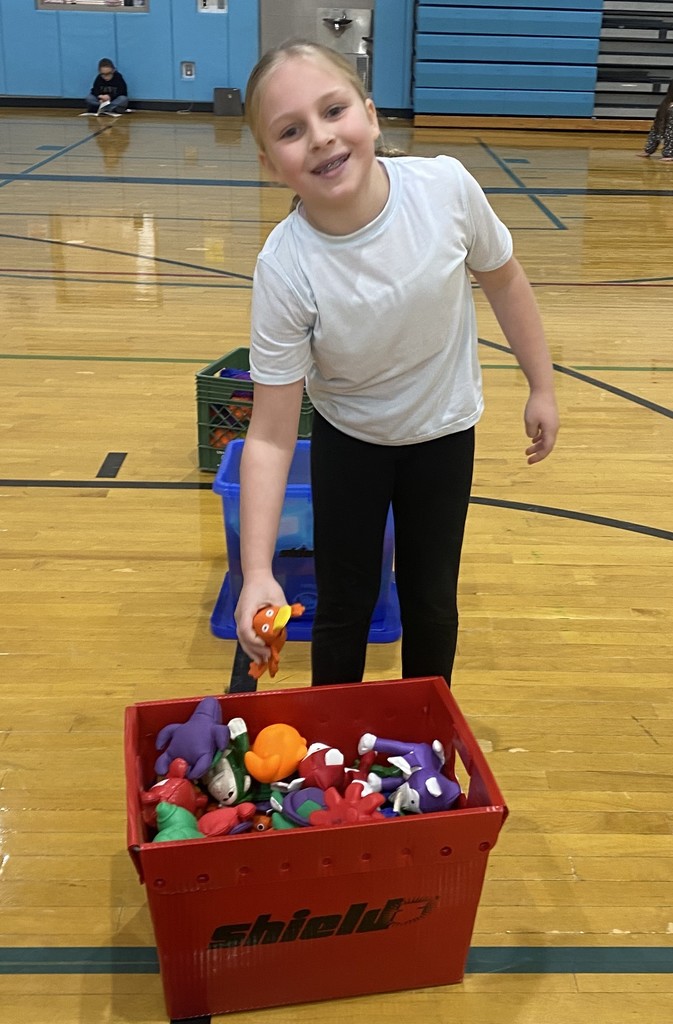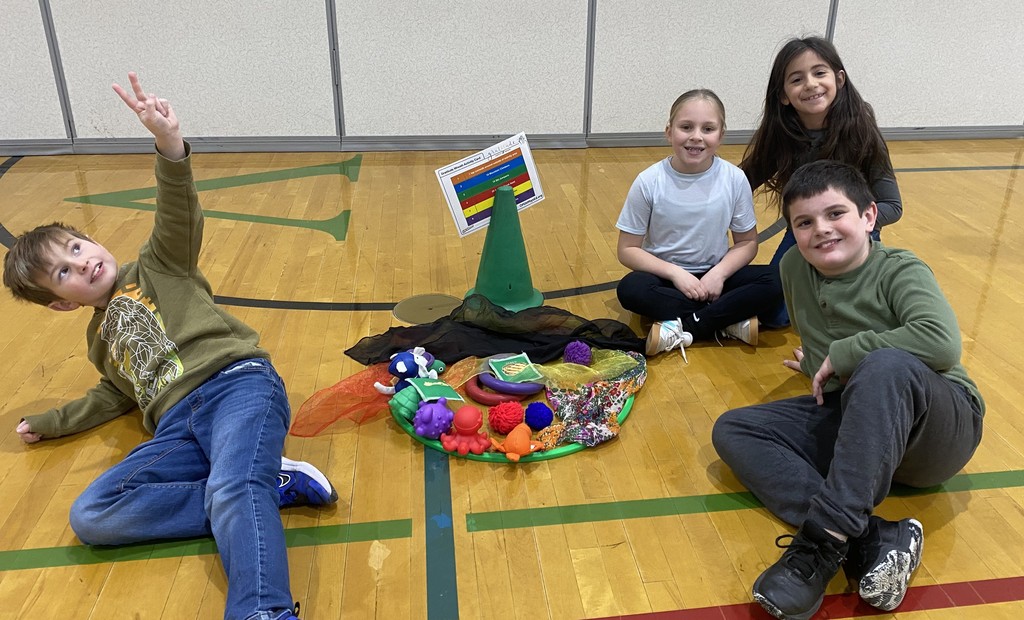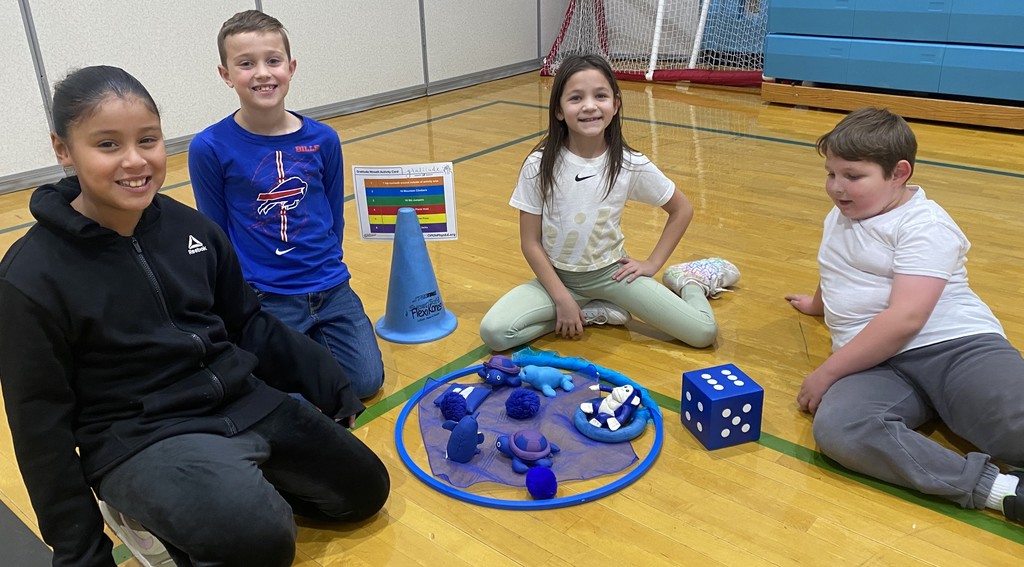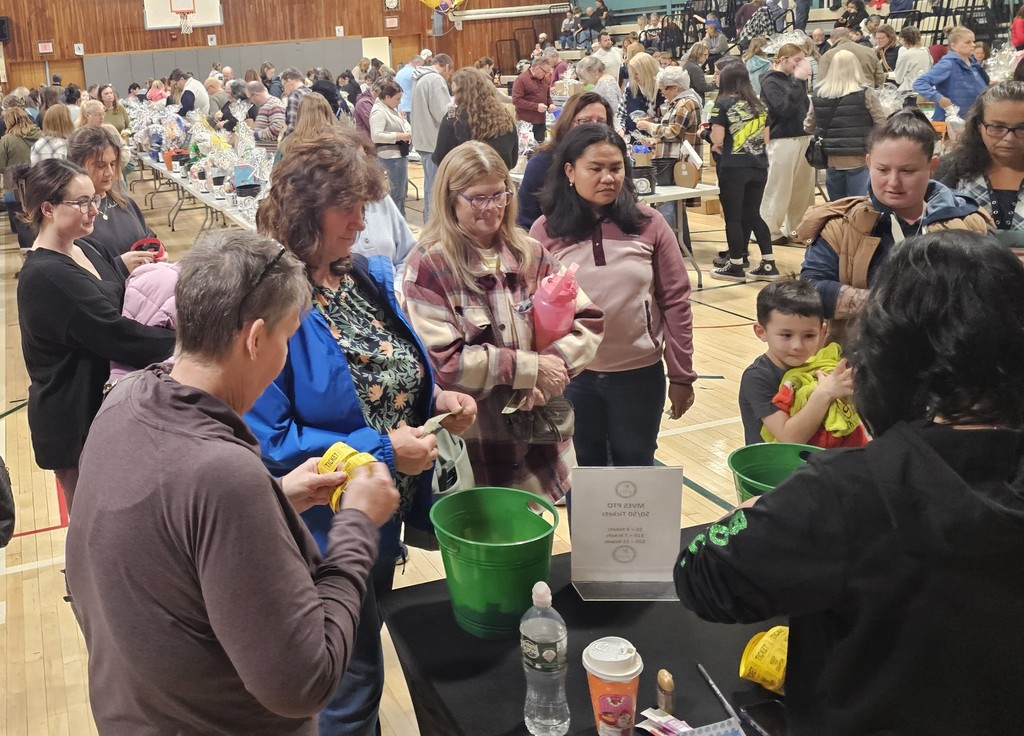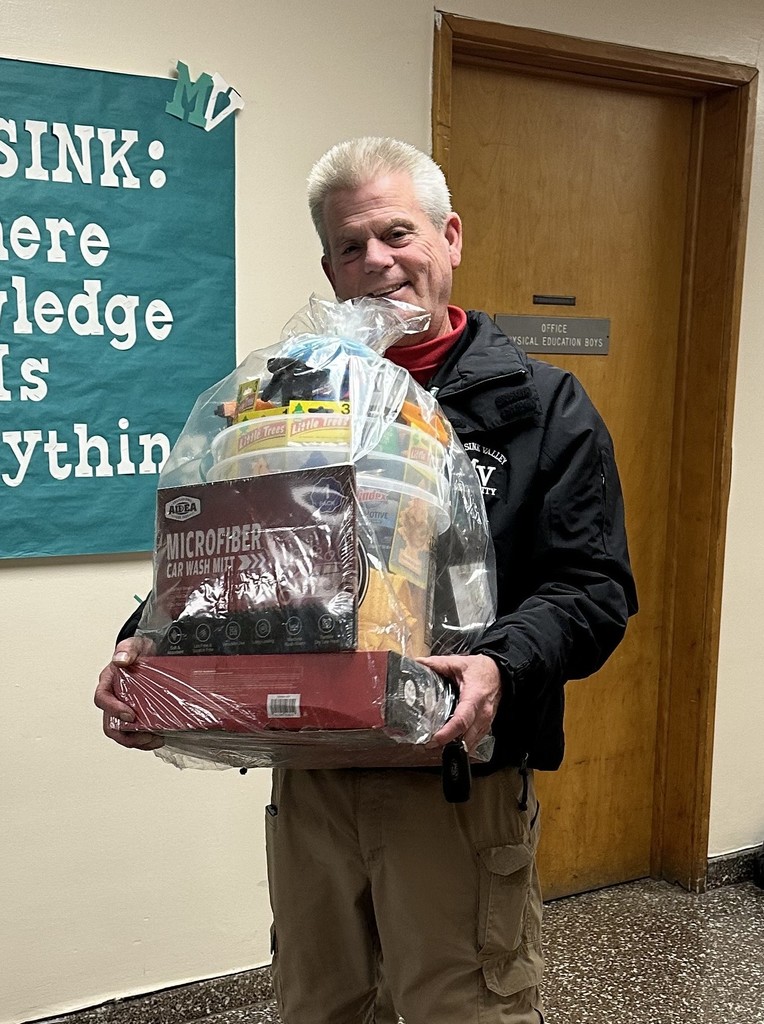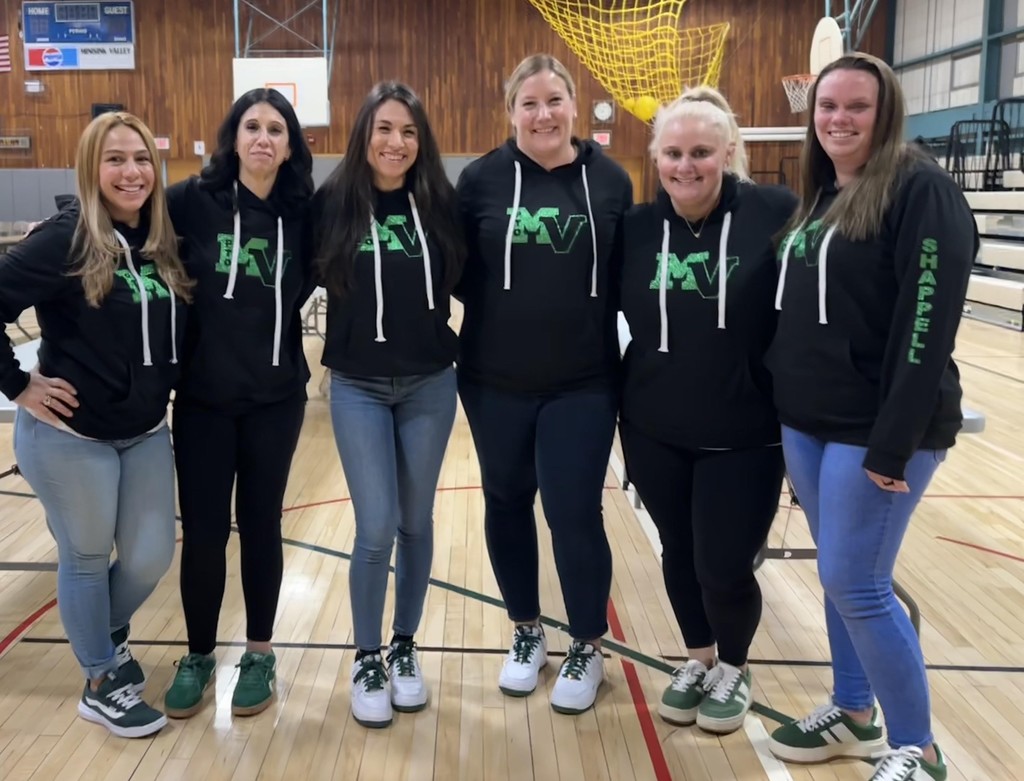Thank you to everyone who supported the High School’s Youth Against Cancer (YAC) Club’s effort to bring awareness to the many health issues impacting men in November, particularly during its Nov. 21 GOING BLUE DAY. The group’s coin jar collection efforts at Perino’s Market, Slate Hill Market and Callie's Coffee Café raised $121.50. THANK YOU to everyone who donated to these jars and to our friends at Perino’s, Slate Hill Market and Callie’s Coffee Café for agreeing to have these jars on display.
But... it gets better! A Buildings & Grounds collection drive raised an additional $325. THANK YOU to everyone who donated! All these funds will be donated to St. Jude Children’s Research Hospital in Memphis, a favorite charity of retired Maintenance Mechanic Joseph Palazzo, who initiated the district’s men’s health awareness initiative years back, with funds raised donated to St. Jude.
And... it still gets better! Mr. Palazzo, though retired from the district but who holds the St. Jude mission in high regard, IS MATCHING the amount raised! A GRAND TOTAL of $893 will be donated to St. Jude, which treats children with serious illnesses and finds cures, no matter their family’s ability to pay. THANK YOU, THANK YOU ---this total amount is the highest amount ever collected!
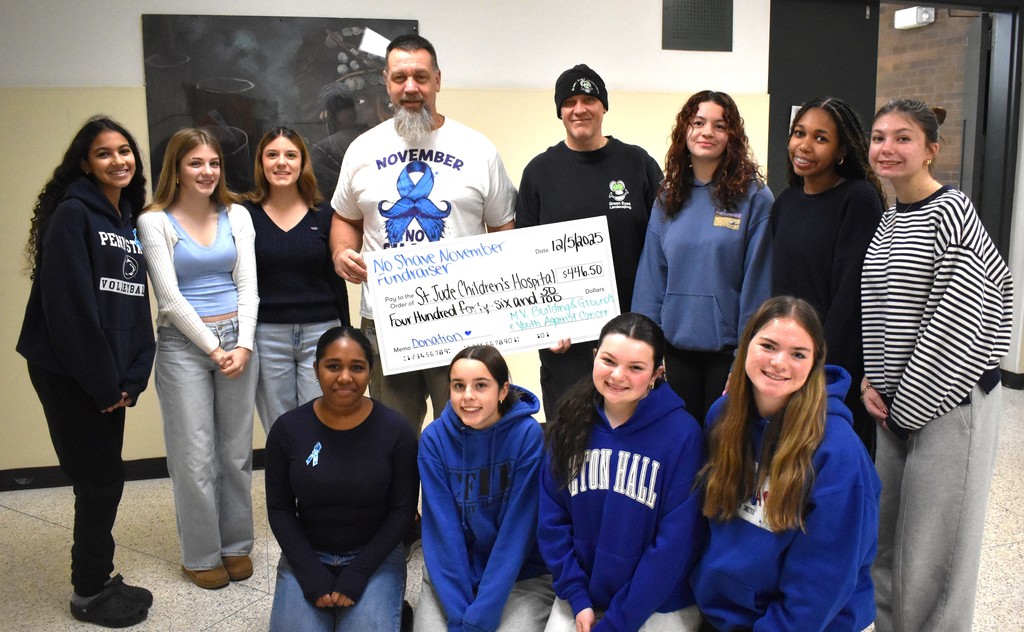
Yes, we know teams can’t “redshirt” themselves.... but we did it anyway for the 2025 Special Olympics New York Polar Bear Plunge. Next year, we will be back!
We’re grateful to officials from Special Olympics New York’s Hudson Valley chapter who visited us this past Friday, Dec. 5, to present us with the 2024 Cool School Challenge Trophy (we raised $4,022) and brought celebratory pizza for anyone from the 2024 team who was able to attend. They gratefully recognized the efforts of the 2024 team and are completely energized to work with us to get an awesome team in place for 2026.
However, the trophy didn’t stay in our possession very long. It’s now in the safekeeping of our friends at the nearby Chester School District, the Cool School Challenge winner for the 2025 plunge at The Rez in Highland Mills. Congratulations, Chester, but you better watch out: We’re coming after you in 2026 to reclaim our title!
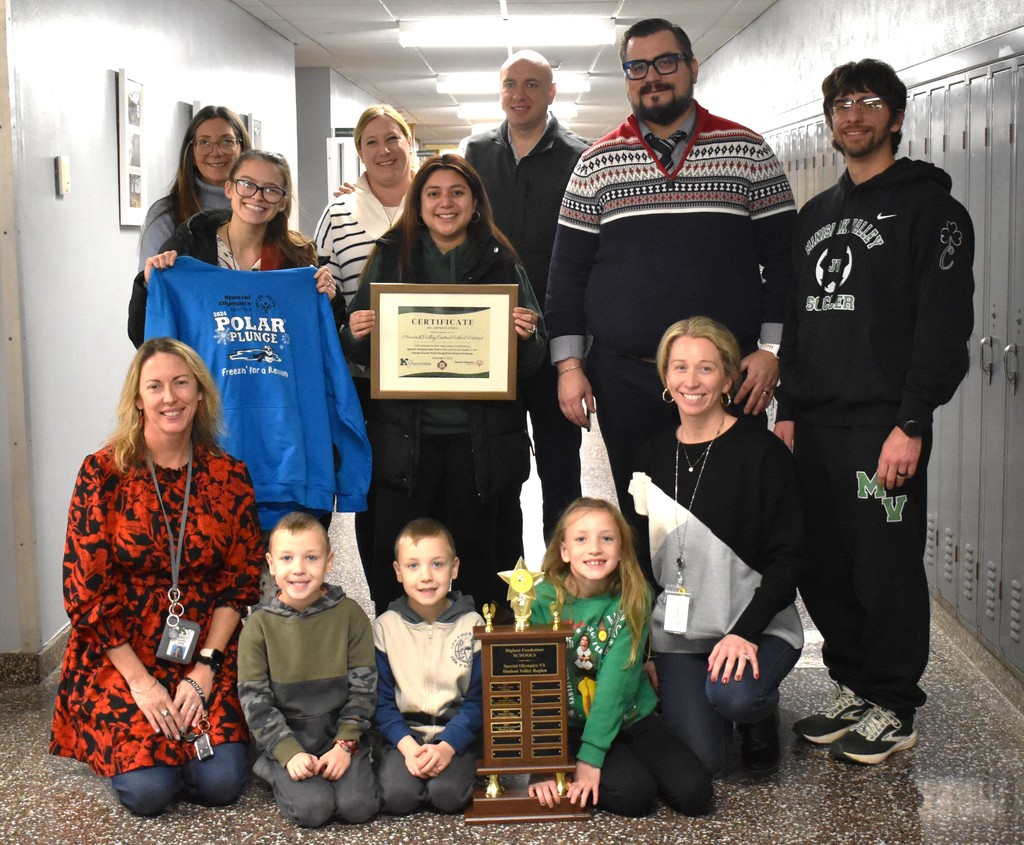
Kudos to members of the Middle School Student Government for making breakfast bags for the Marilyn Pierce GMIC Warming Station in Middletown. The bags were filled with muffins, granola bars, clementines and a juice box. These caring students hope they will provide some healthy morning nourishment to those who stayed overnight because they had nowhere to go and needed to get out of the cold weather. WELL-DONE, everyone!
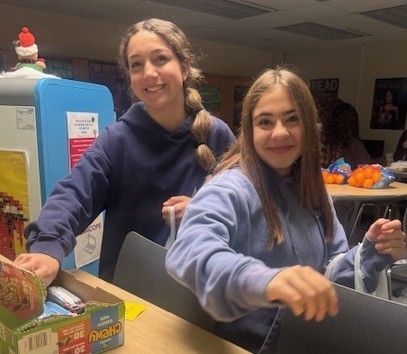
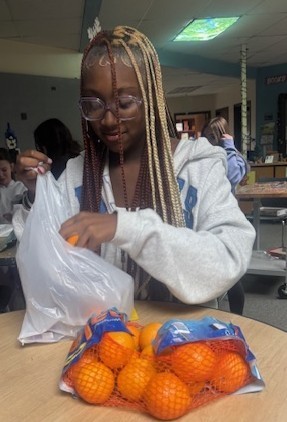
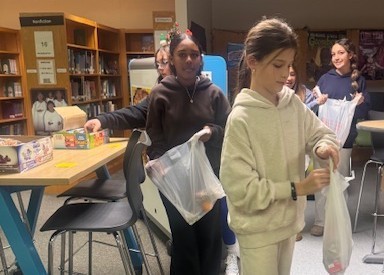
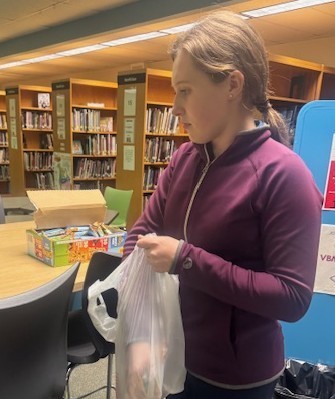
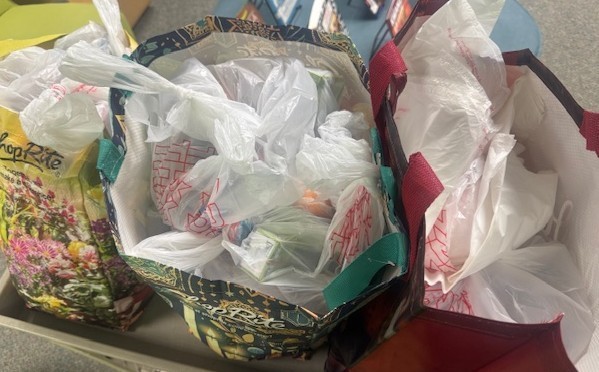
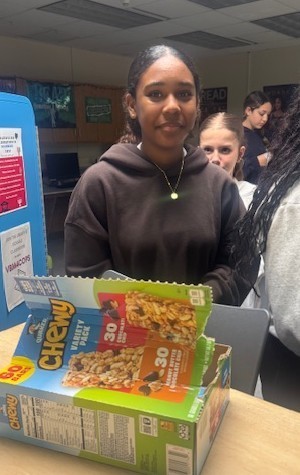
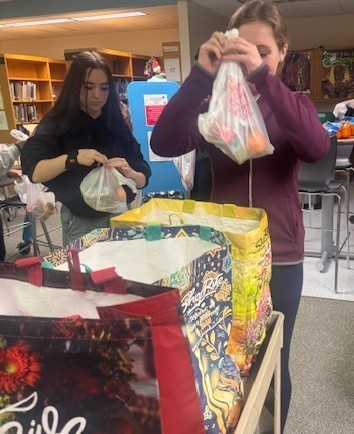
Don't make lunch, remind your student to pick up lunch (and breakfast) too!
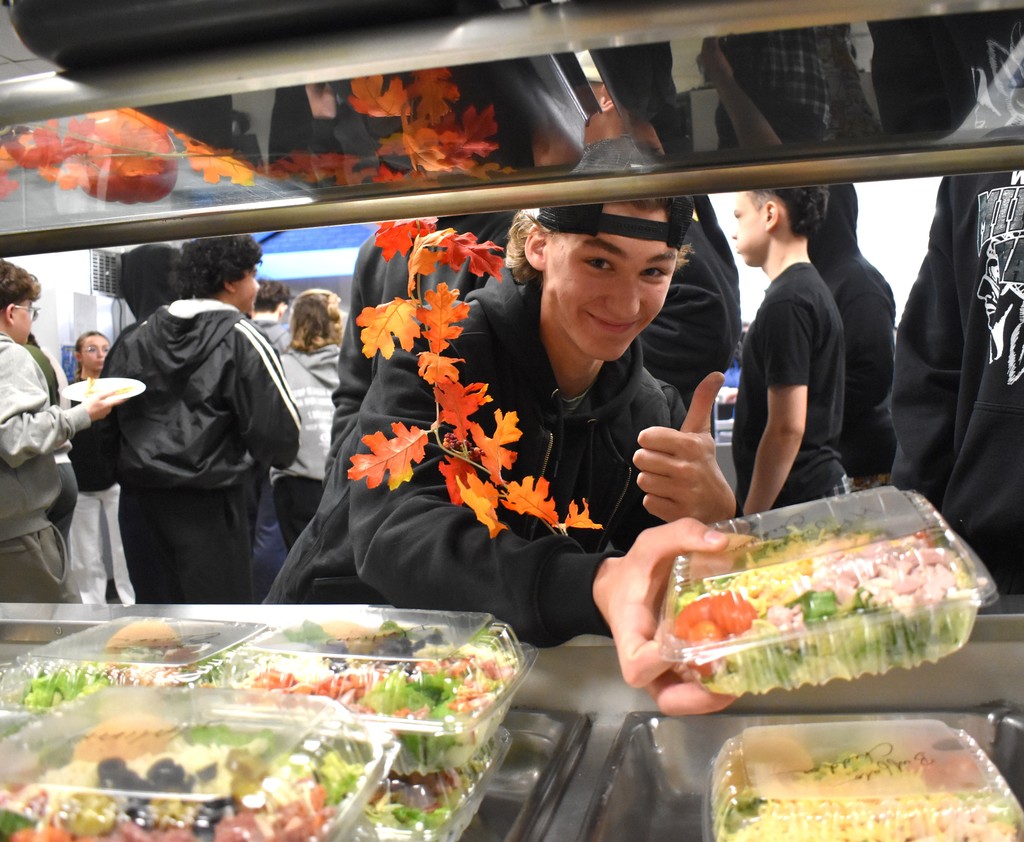
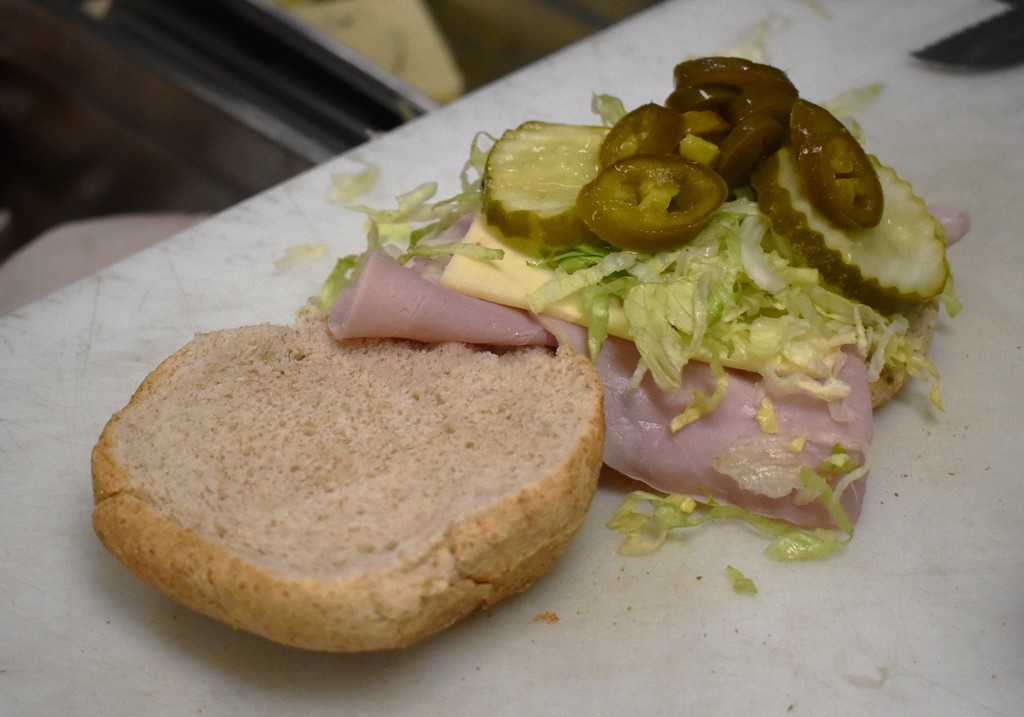
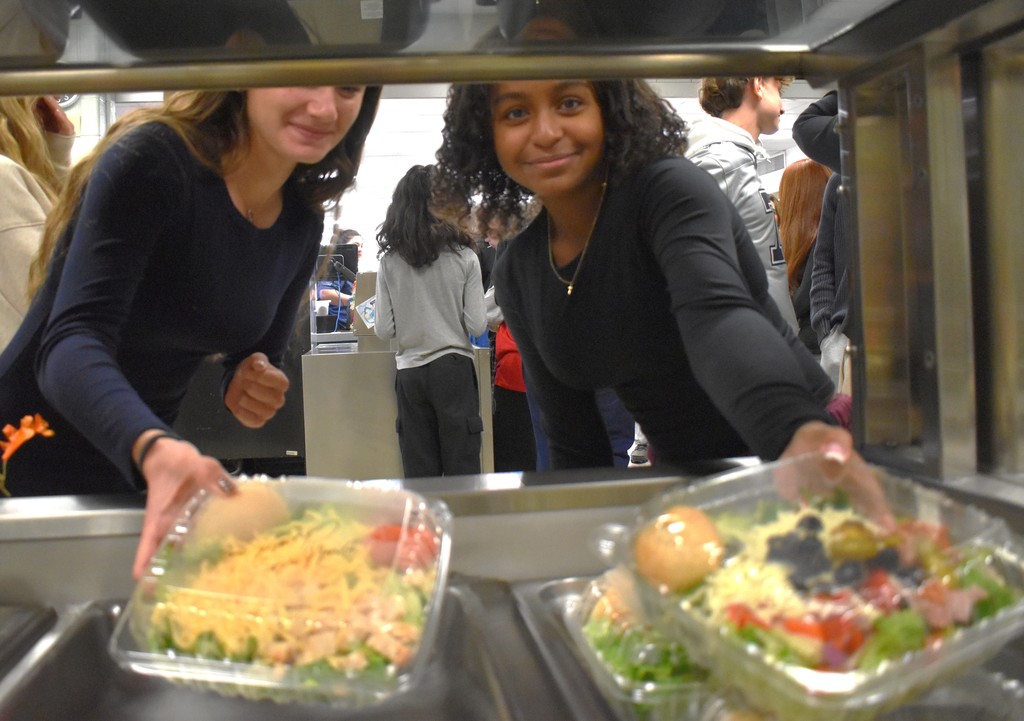
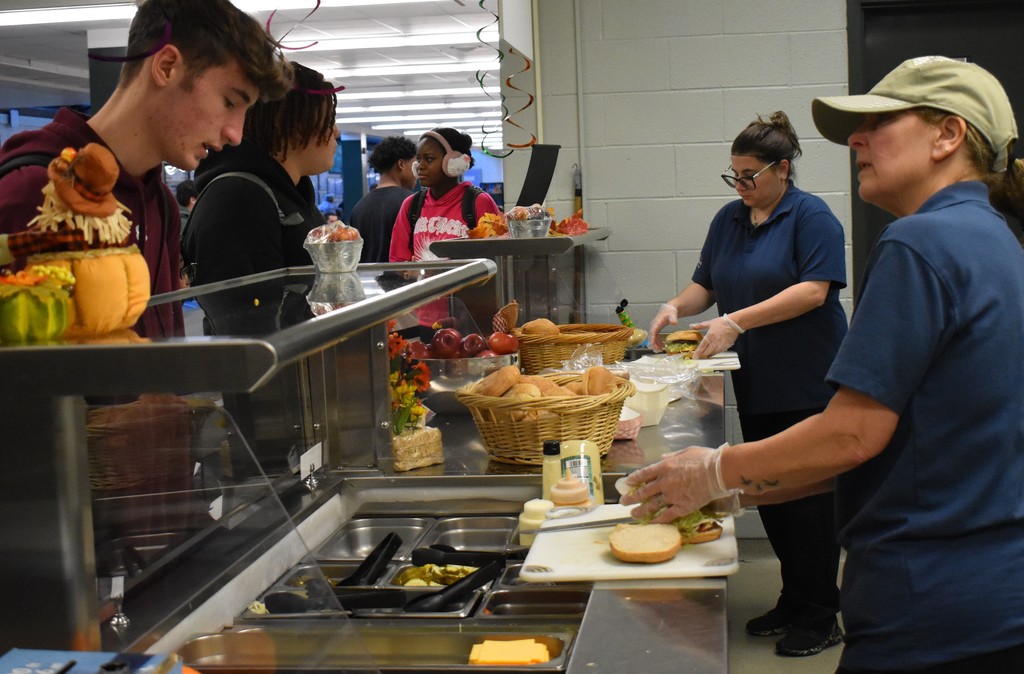
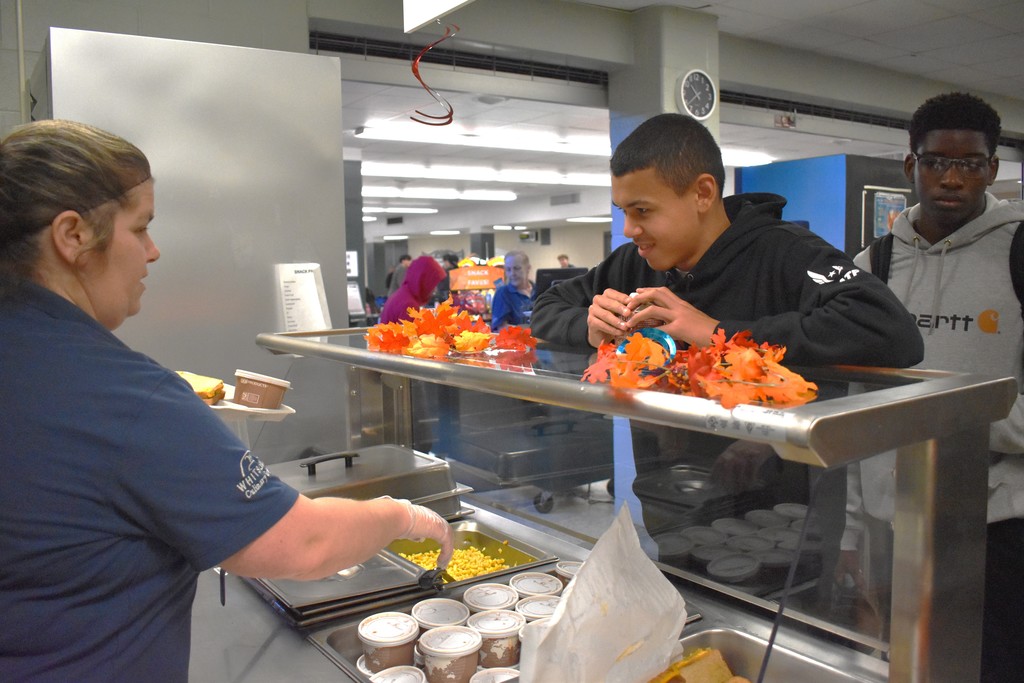
Andrew Hulle’s IS trombonists are continuing to review their first 5 pitches (Bb, C, D, Eb, and F) and showing the difference between whole notes (4 counts), half notes (2 counts), and quarter notes (1 count). His trombonists have been practicing each pitch and rhythm and then applied those skills to their concert music.
•The trombone's ancestor was an instrument called the sackbut. It first appeared in the 1500s during the Renaissance music period. Over many years, the sackbut slowly changed and improved into the trombone known today.
•Beethoven was the first composer to add trombones to a full symphony orchestra.
•Trombones are used in many different kinds of music because of their special sound. They can be heard in orchestras, concert bands, marching bands, brass bands, big bands, swing bands, ska bands and jazz groups.
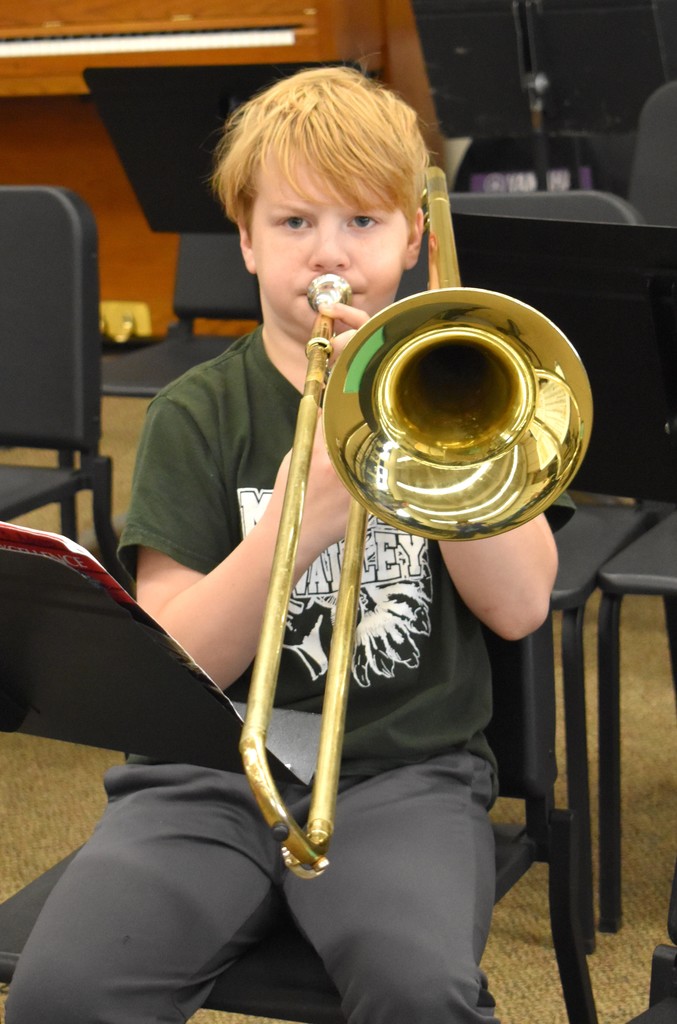
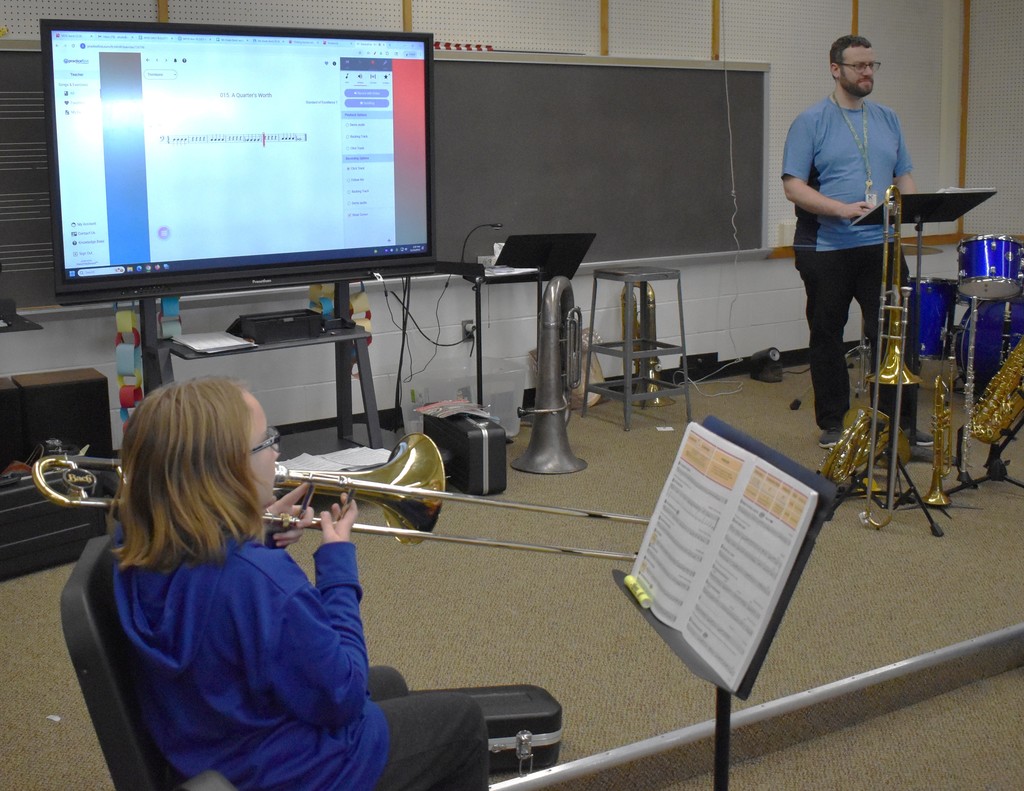
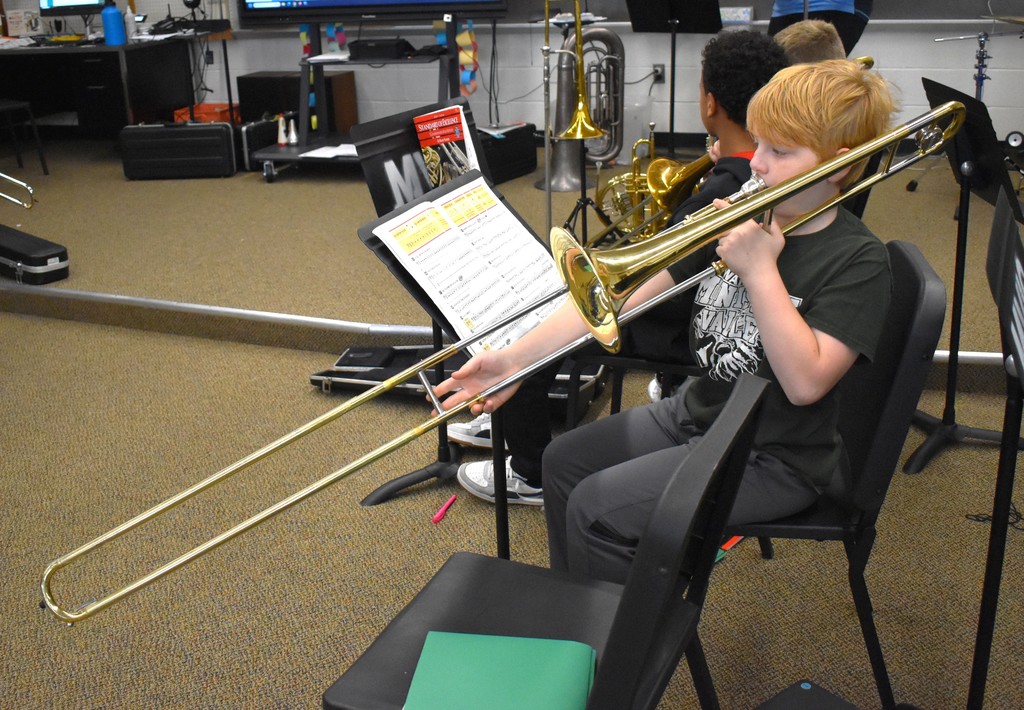
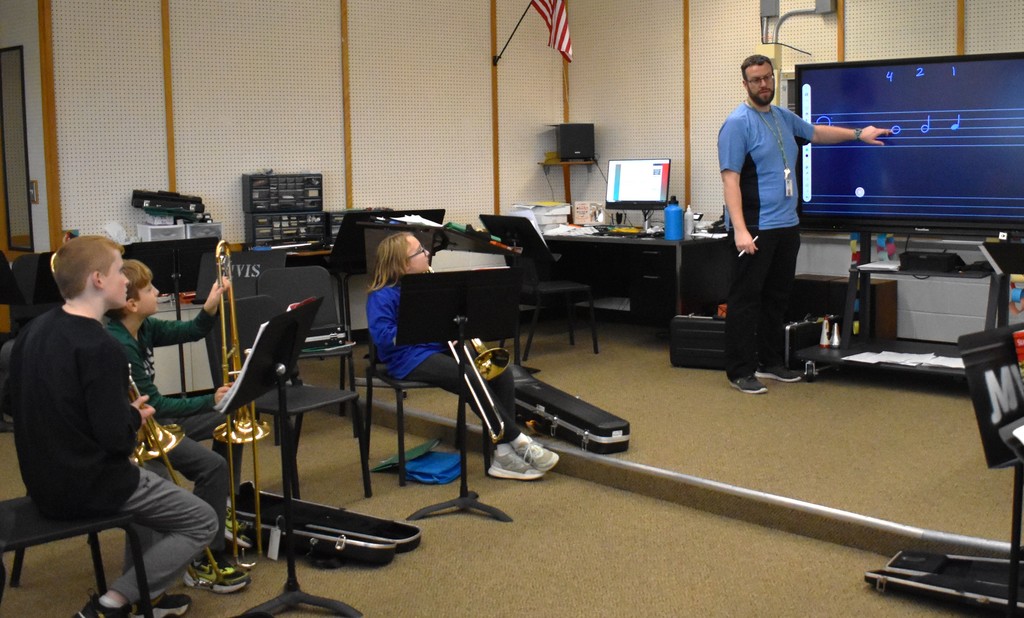
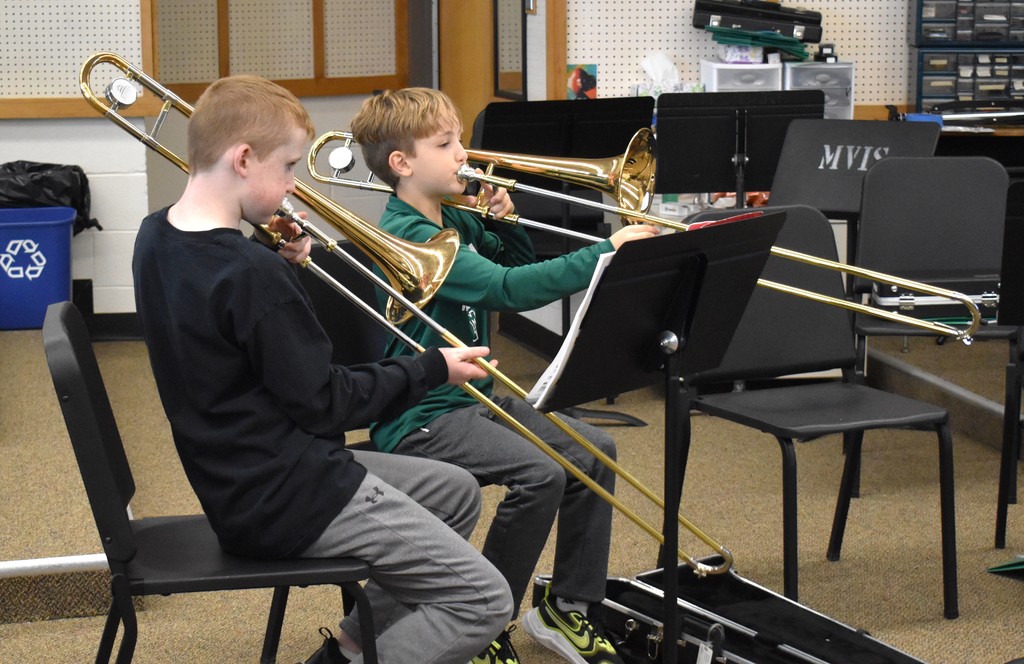
Marjori Bobish's ES transitional kindergarteners discovered that wearing snow pants on a slide makes them move down the slide faster and fresh snow provides a very soft landing on the ground. Who knew?
Her students also learned that the sun doesn't melt the snow, it's the warmer temperatures that do! They figured out a very important truth that all snow fans eventually learn: Not all snow is good for making snowballs! While things might be different now.,.students weren't able pack the snow together while outside this past Wednesday.
"As the children make these discoveries and communicate what they have learned with each other, they're building their early literacy skills which is the foundation for future reading and writing," said Mrs. Bobish.
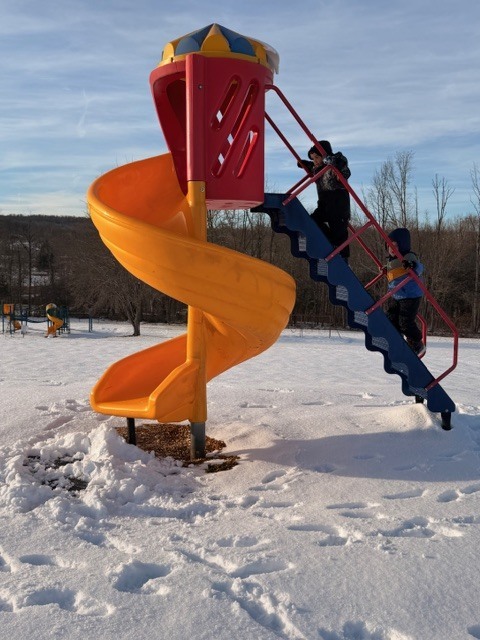
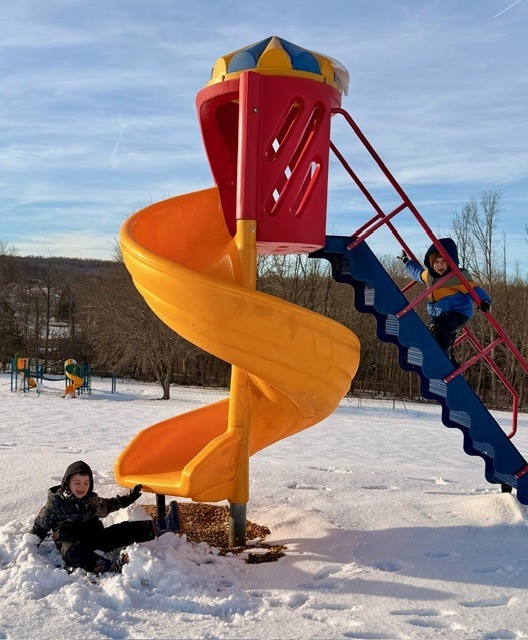
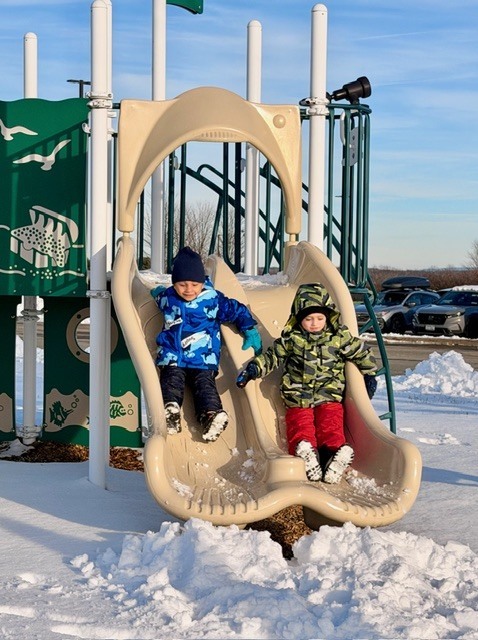
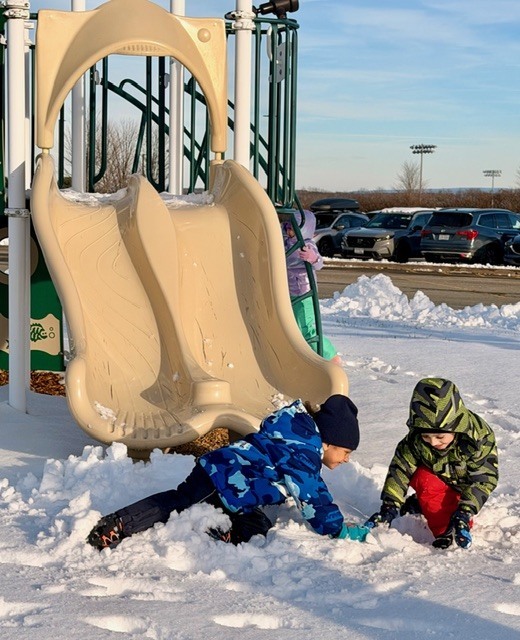
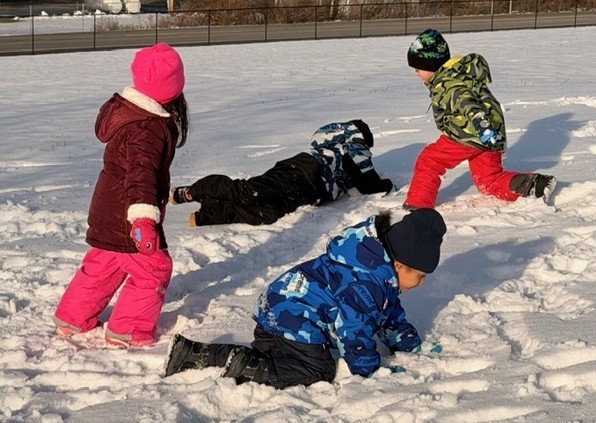
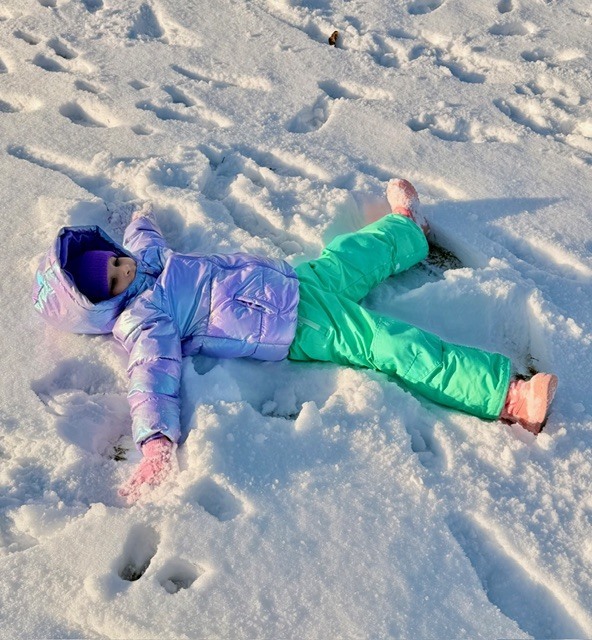
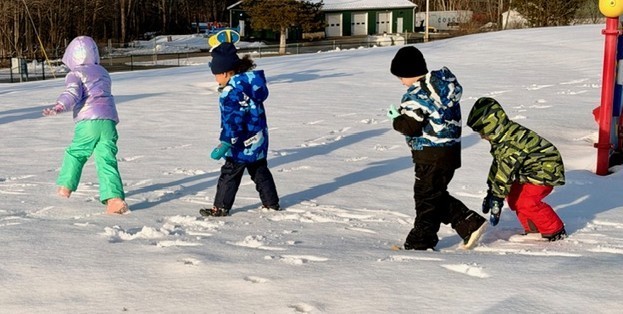
K-5 FAMILIES: Be part of the fun and merriment for a great cause! Pull out your student's finest Grinchy (or green) attire and sign up to attend a special fundraiser showing of “The Grinch” on Friday, Dec. 12, beginning at 5:30 p.m. at the ES/IS Auditorium! The evening runs until 8:30 p.m. so you’ll even have a chance to grab a bite to eat or do some holiday shopping while your student is having a great time!
The ES PTO and High School’s Youth Against Cancer (YAC) Club are hosting this fun “Kids Night Out” evening! Cost is $10 per student, with snacks, a souvenir and a very special visit from the Grinch himself! Don’t miss out!
All proceeds will benefit the good work of the ES PTO and the YAC Club. Sign-up via this link: https://docs.google.com/forms/d/e/1FAIpQLSfsKNmEfJdvoBl6ZMtFJi6pvYE6LSWbf23qvUHGJbIG78tuUQ/viewform
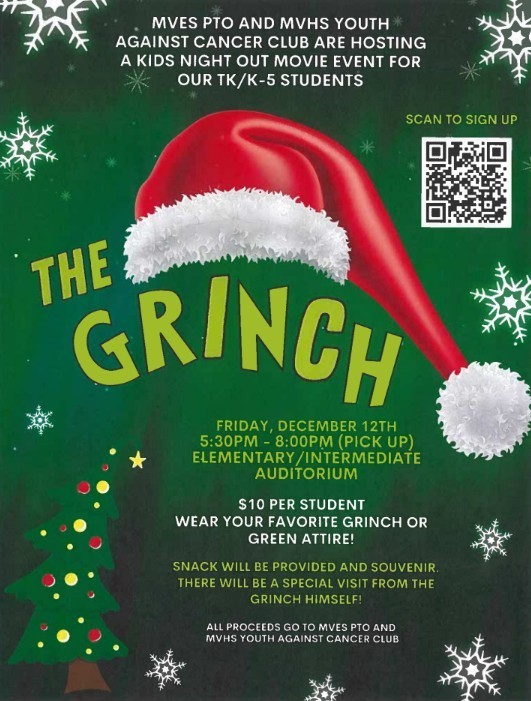
Laura Hulle's 7th and 8th grade band students and Danielle MacKenzie's 6th grade band students are putting the finishing touches on their music for the upcoming Middle School Winter Concert on Dec. 8...one week from tonight! The bands have been practicing using the circle rehearsal format.
A band circle rehearsal is a non-traditional setup where a band sits in a circle to improve listening skills, musical independence, and communication. This method changes the usual dynamic by breaking up standard sections, forcing members to listen to a wider variety of instruments and their neighbors, and creating a more interactive and focused rehearsal. It is especially useful for developing musical independence and is often used for workshops or as a creative exercise.
Be sure your calendars are marked for this upcoming, wonderful musical evening!
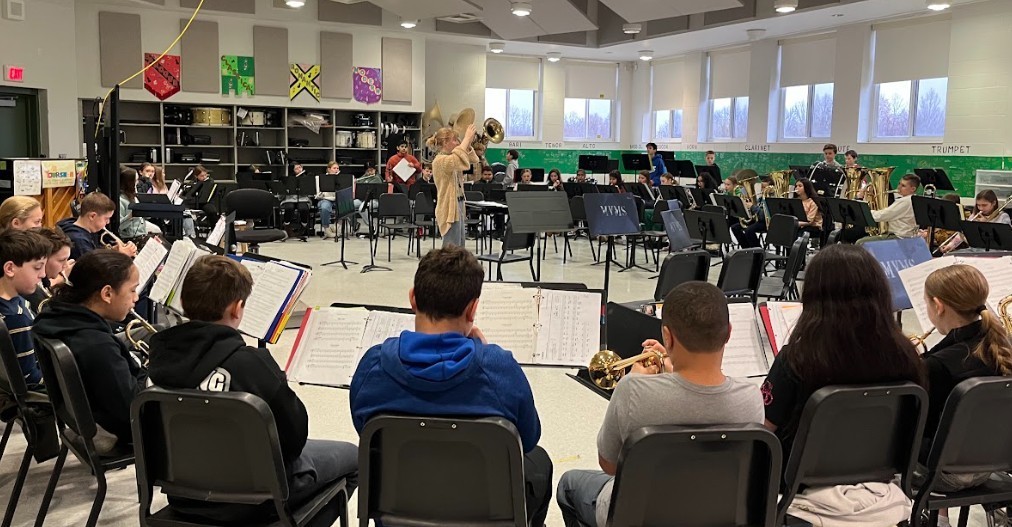
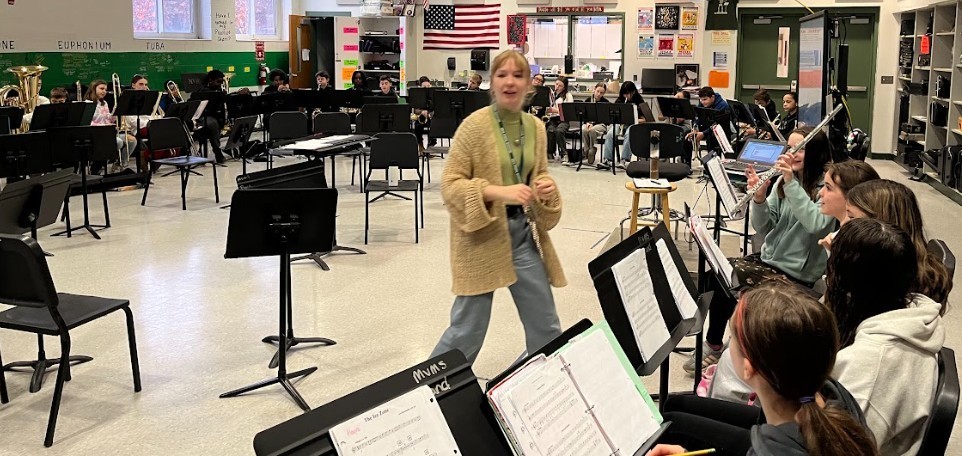
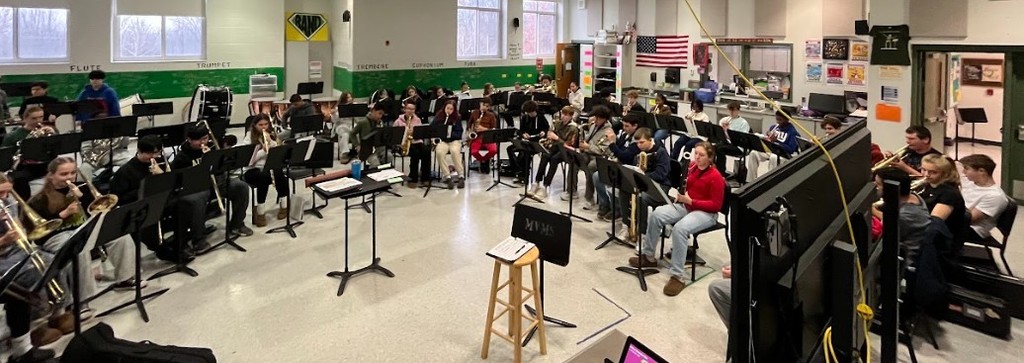
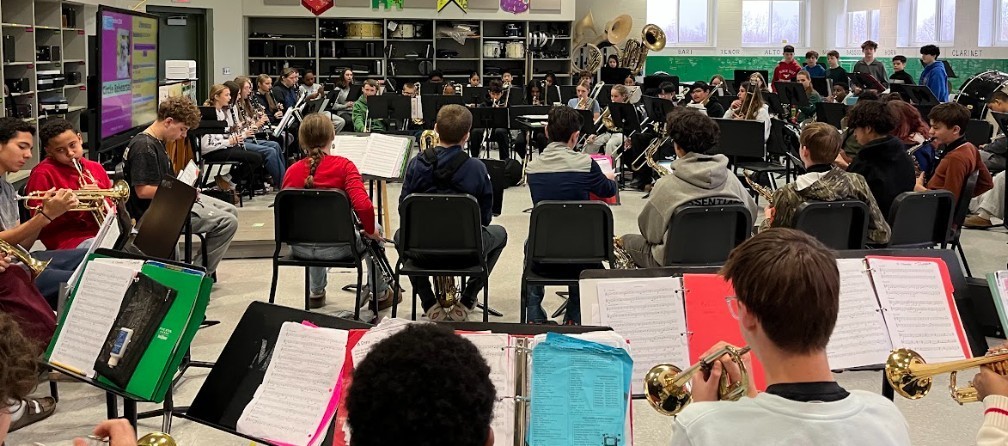
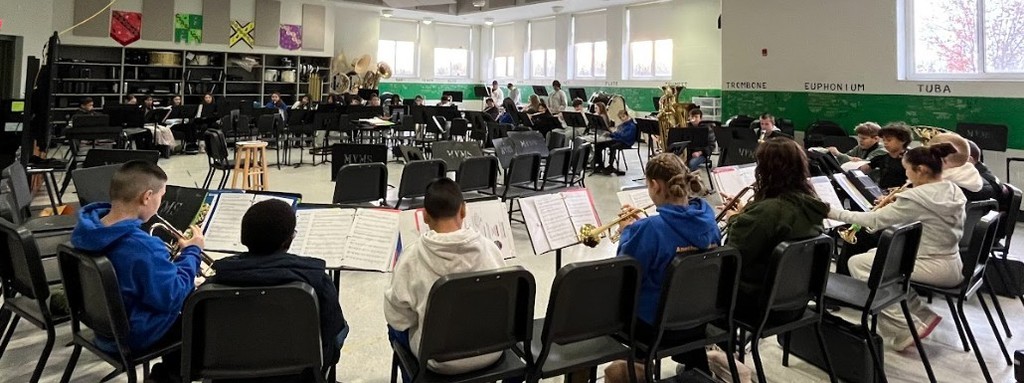

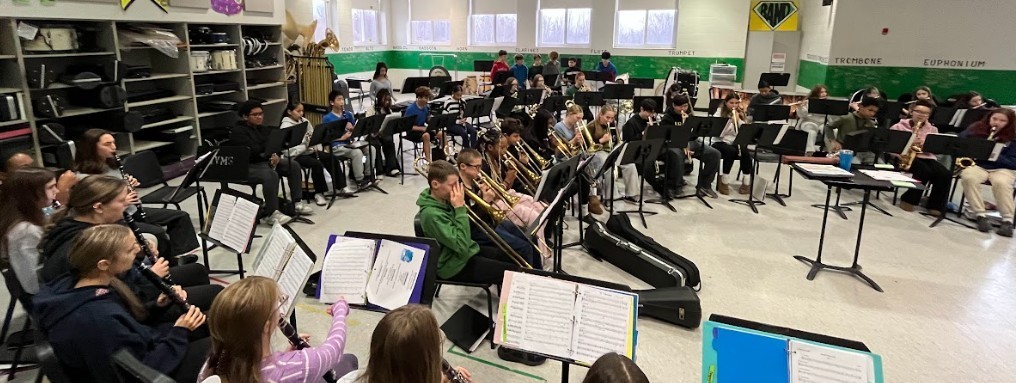
The distributive property is a math rule that helps simplify multiplication by showing that multiplying a number by a sum is the same as multiplying the number by each part of the sum separately and then adding the products.
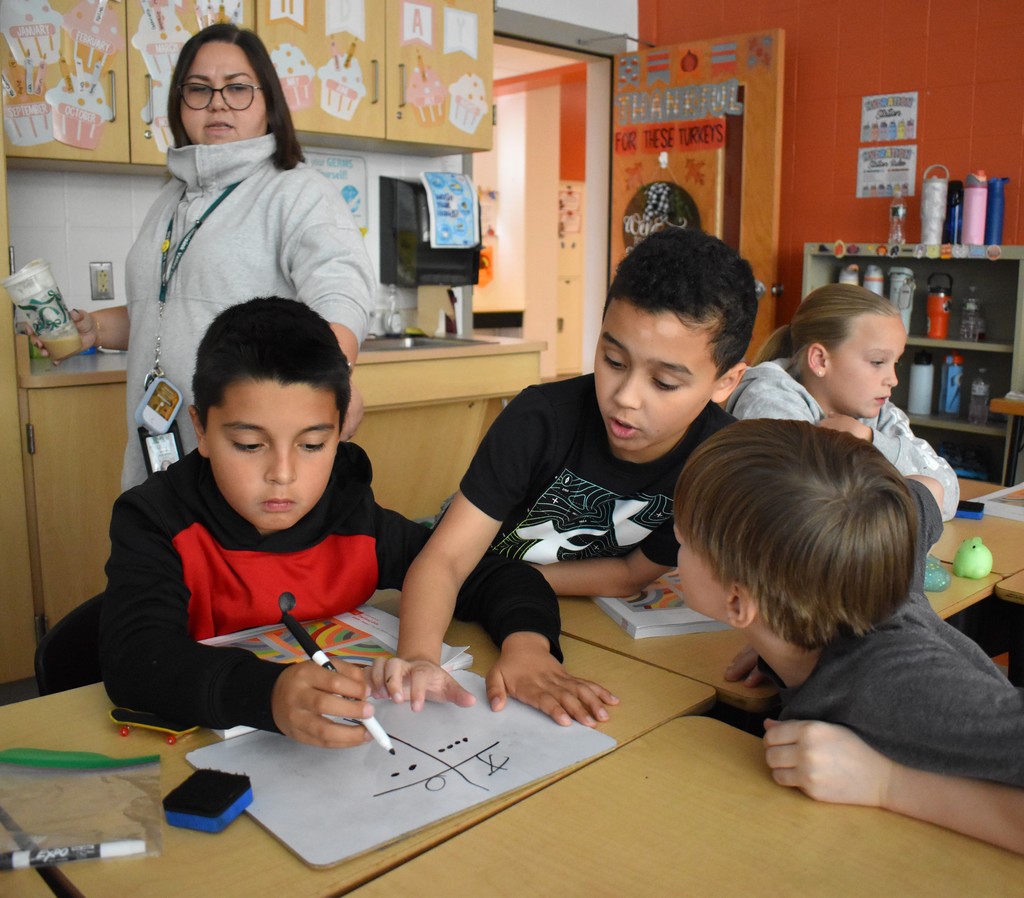
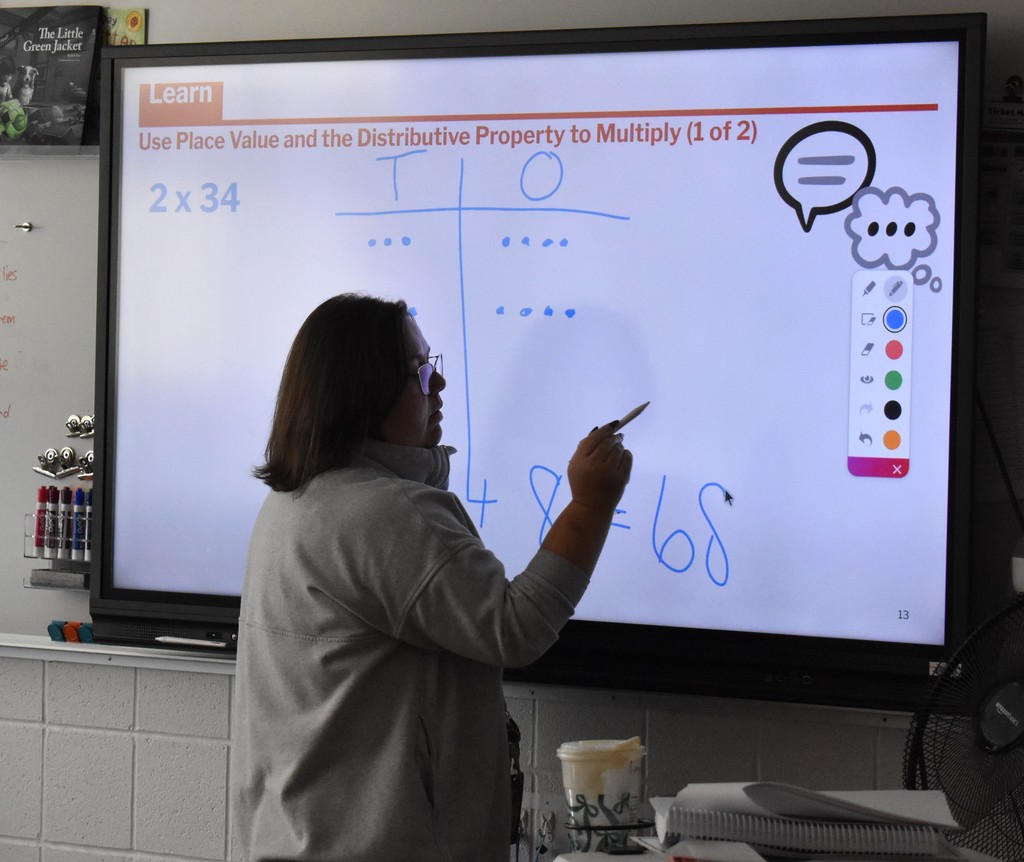
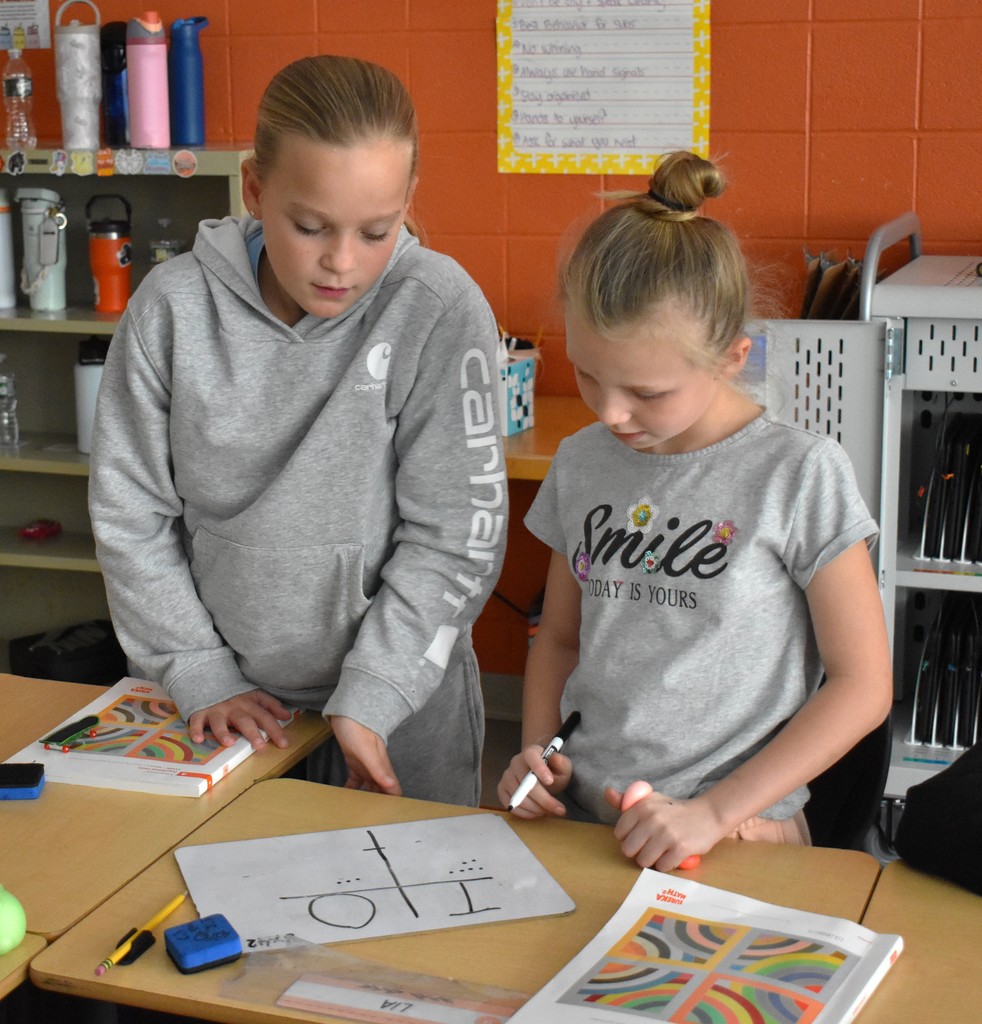
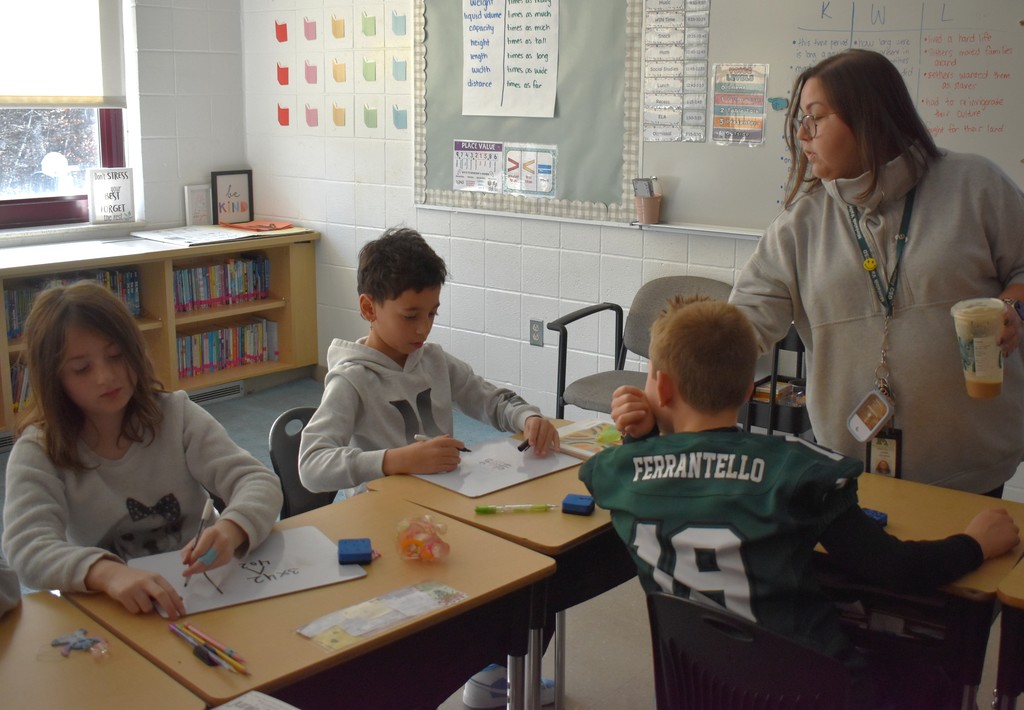
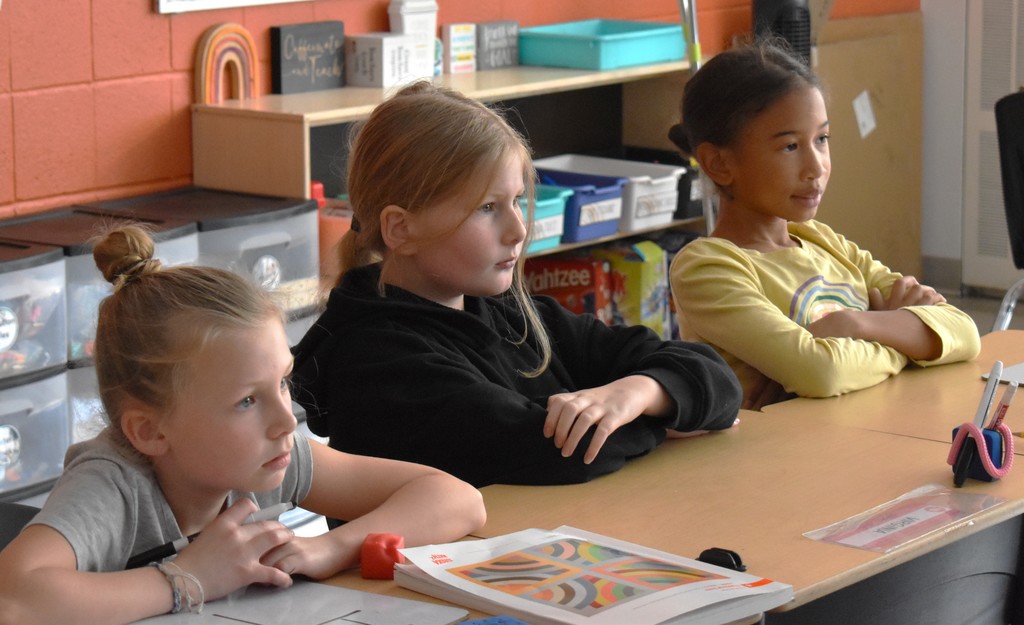
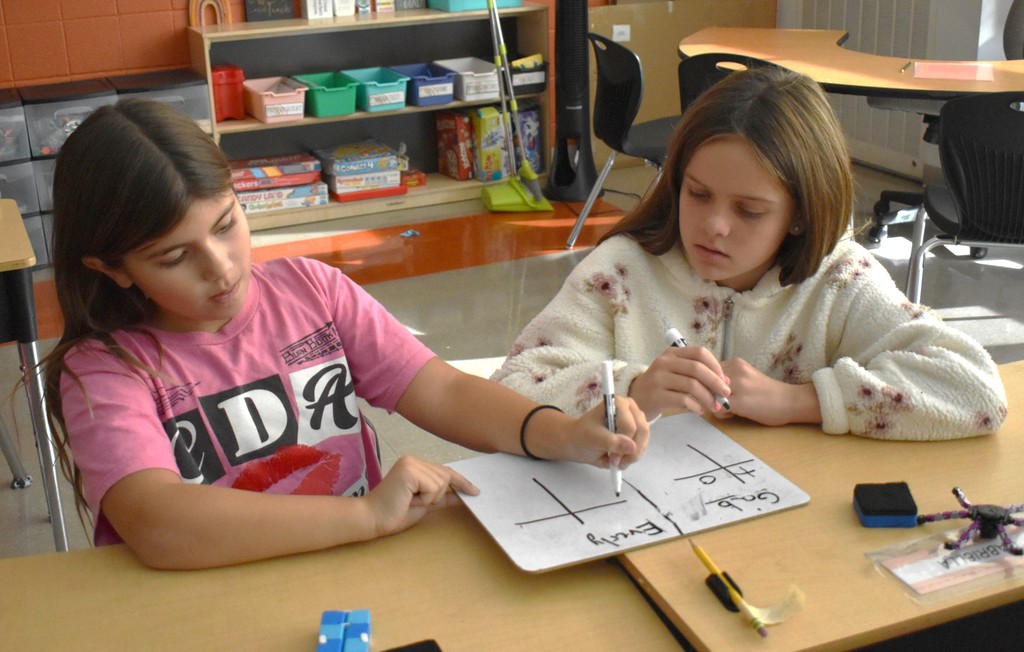
WOW! SIMPLY AMAZING!
Thank you to everyone who contributed to the recent High School FLBA Food Drive! The group shattered its past collection drive efforts with over 1,000 items donated, weighing an estimated 800 pounds! The FBLA Club will be making a very healthy donation to Minisink Cares, the group which distributes the food to the community. Thank you for helping those who are coping with food insecurity; your donations will make a difference!
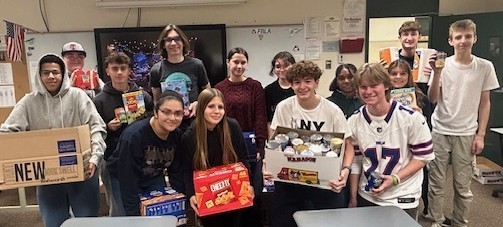
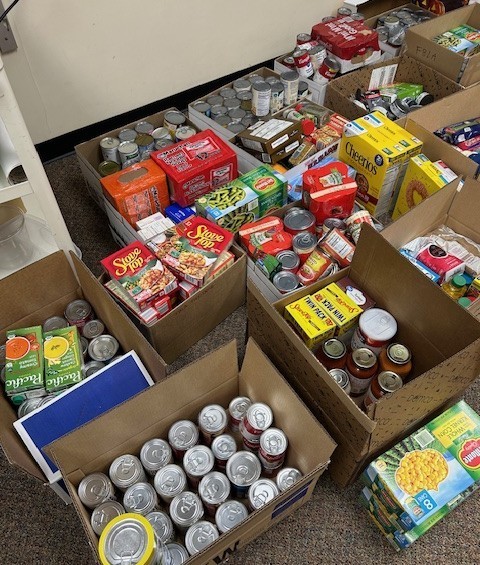
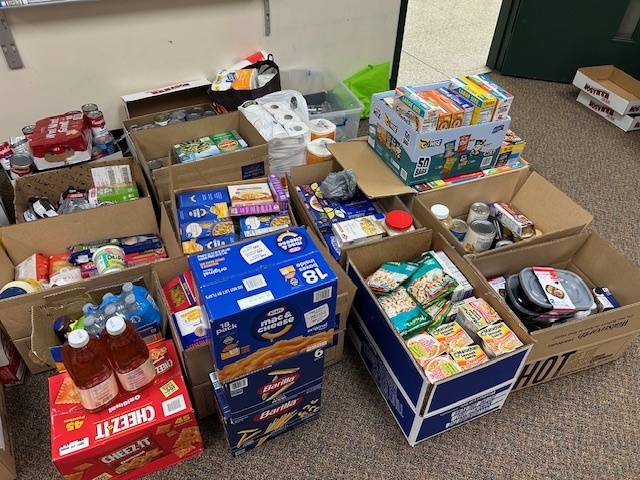
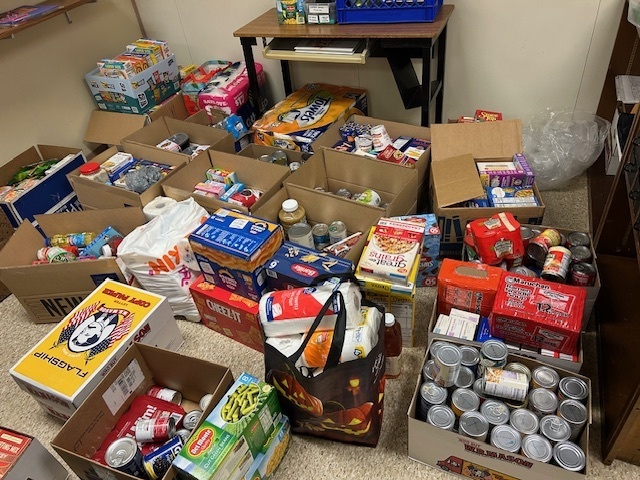
Class of 2019 alumnus Sarah Wolff, a third-year PhD student at Texas A&M University in its College of Veterinary Medicine and Biomedical Science, met with students. She’s part of the research team which discovered a fibroblast growth factor (FGF) — a type of protein — capable of regenerating an entire finger joint, including articular cartilage, tendons and ligaments.
Researchers were able to implant different FGFs into tissues that normally don’t regenerate and they found one — FGF8 — that can regenerate a complete joint and the beginnings of a fingertip. While FGF8 can’t regenerate some recognizable elements like a fingernail, its discovery is an important step toward full-limb regeneration. Ms. Wolff's project specifically uses FGF8 to regenerate joints after amputation in mammals.
“Our expectation is that if we can figure out all the factors that regenerate a finger, then we could apply those factors anywhere on the rest of the arm, or even a leg, and regrow a limb,” Dr. Lindsay Dawson, assistant professor in the VMBS’ Department of Veterinary Physiology & Pharmacology, said in published reports.
Ms. Wolff, who is Dr. Dawson’s graduate student, noted that joint regeneration is associated with less mature tissues and she is driven to understand is how can joint regeneration across the lifespan can be stimulated.
Ms. Wolff earned her undergraduate degree in Animal Science, with an Equine Science minor, from Penn State in 2023, where she was also a member of the equestrian riding team as well as clubs relating to research in her field of study.
More speakers are planned for this Science Speakers Series. Please join us in thanking Ms. Wolff for taking the time to meet with students and show and talk to them about the wonderful possibilities that can become a reality with hard work and determination.
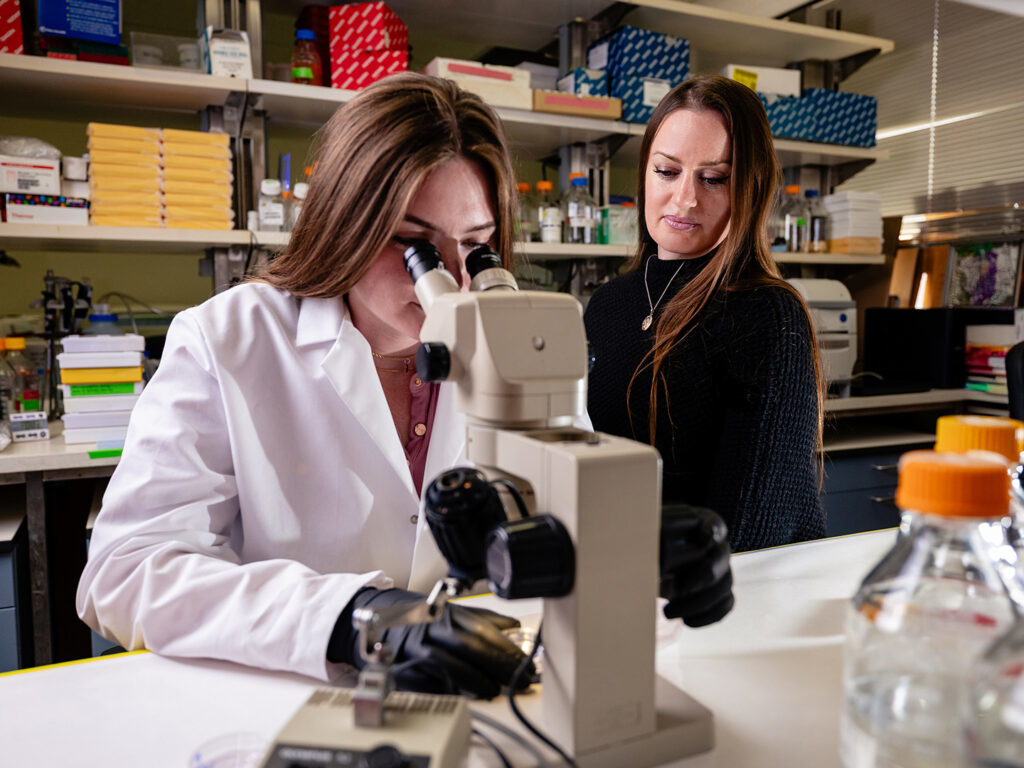
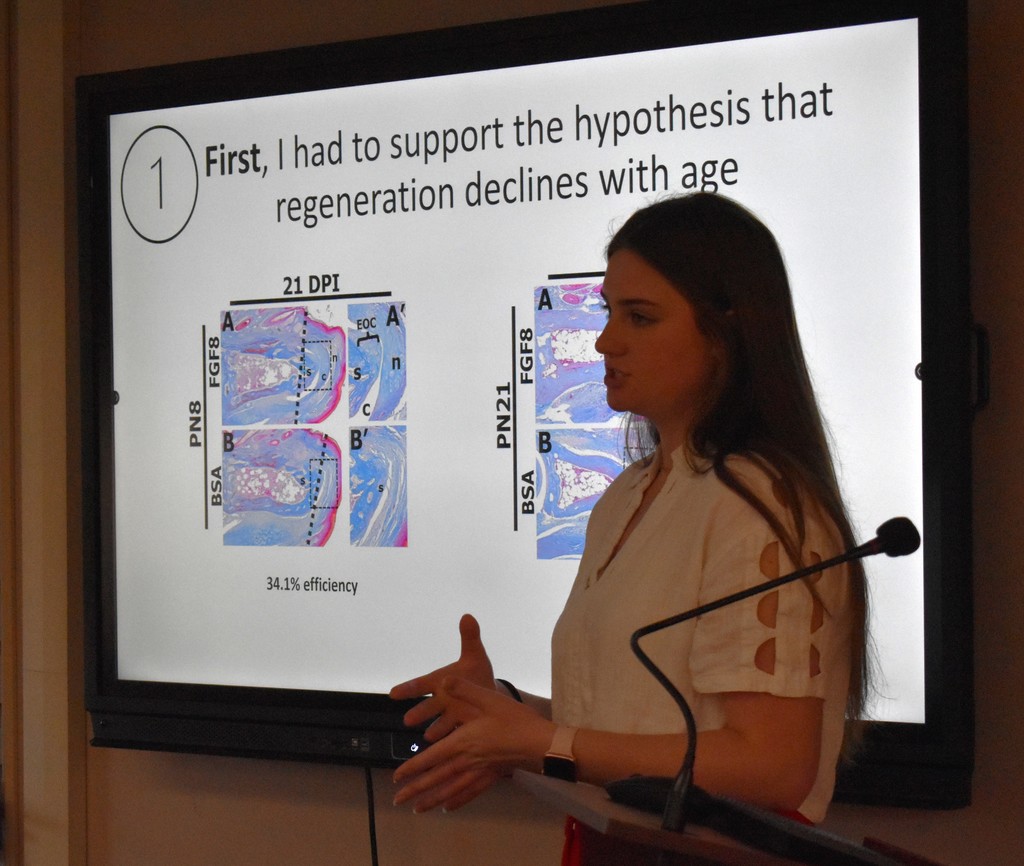

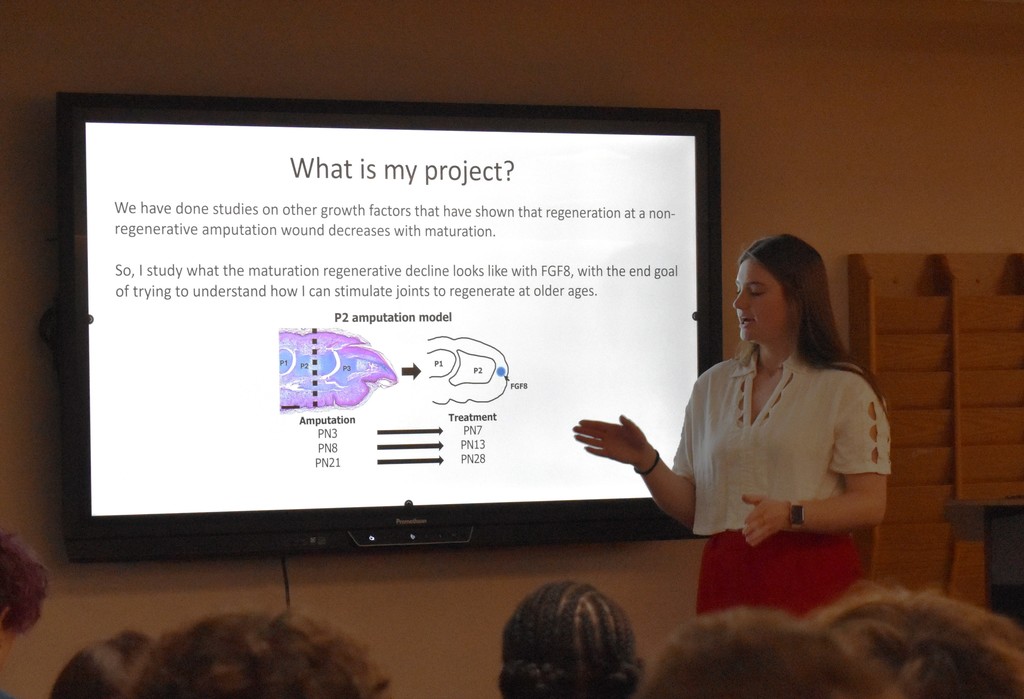
Each student wrote a sentence "Yo doy gracias por..." (I give thanks for...) on a paper feather and wrote in Spanish what they’re thankful for along with illustrations. Some common words were: familia (family), amigos (friends), casa (house), madre y padre (mom & dad), mascotas (pets).
¡Qué gran idea vincular a los estudiantes de español con la estacionalidad!
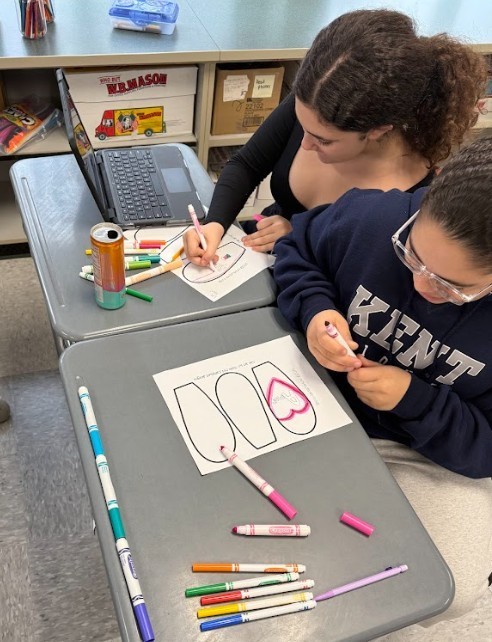
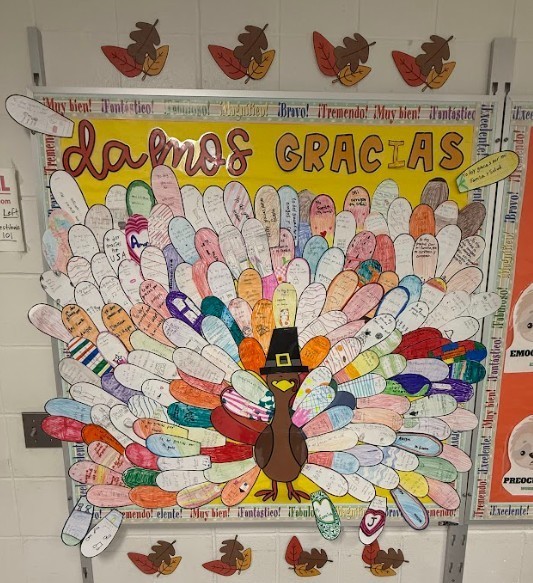
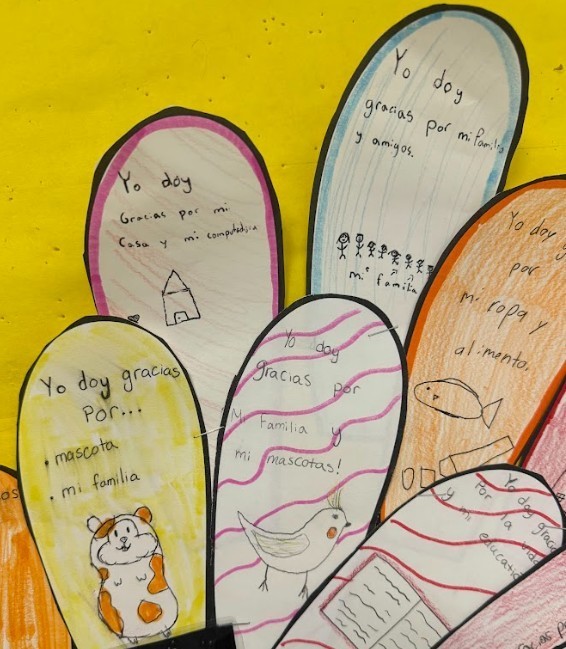
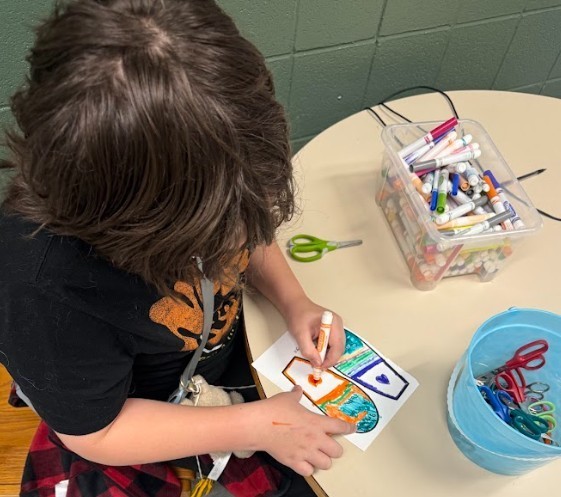
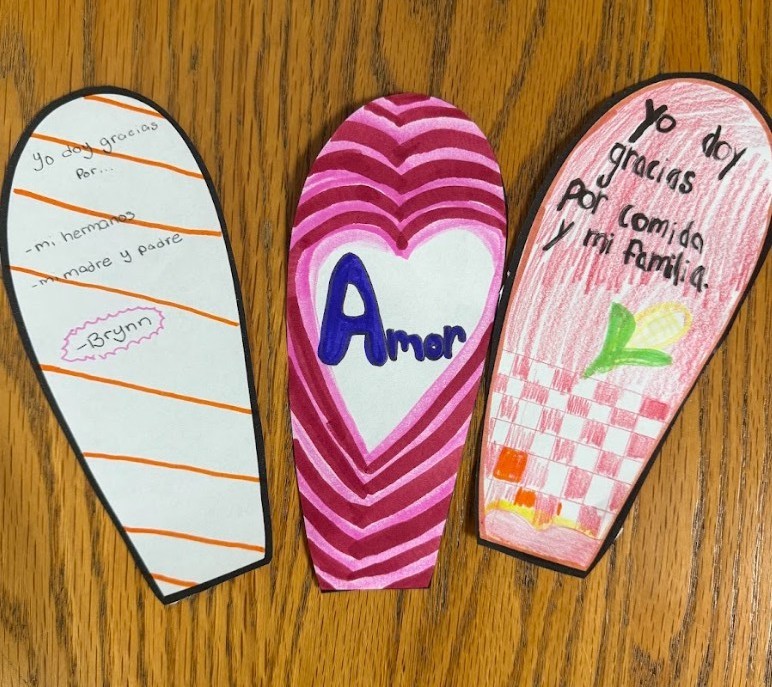
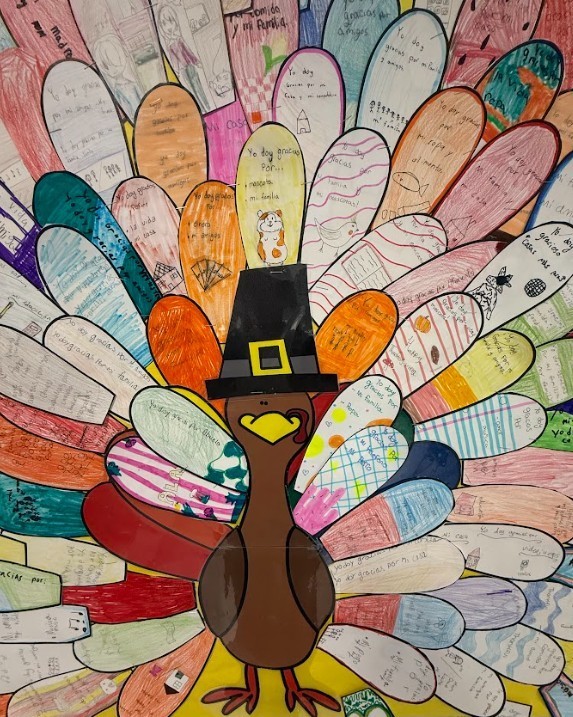
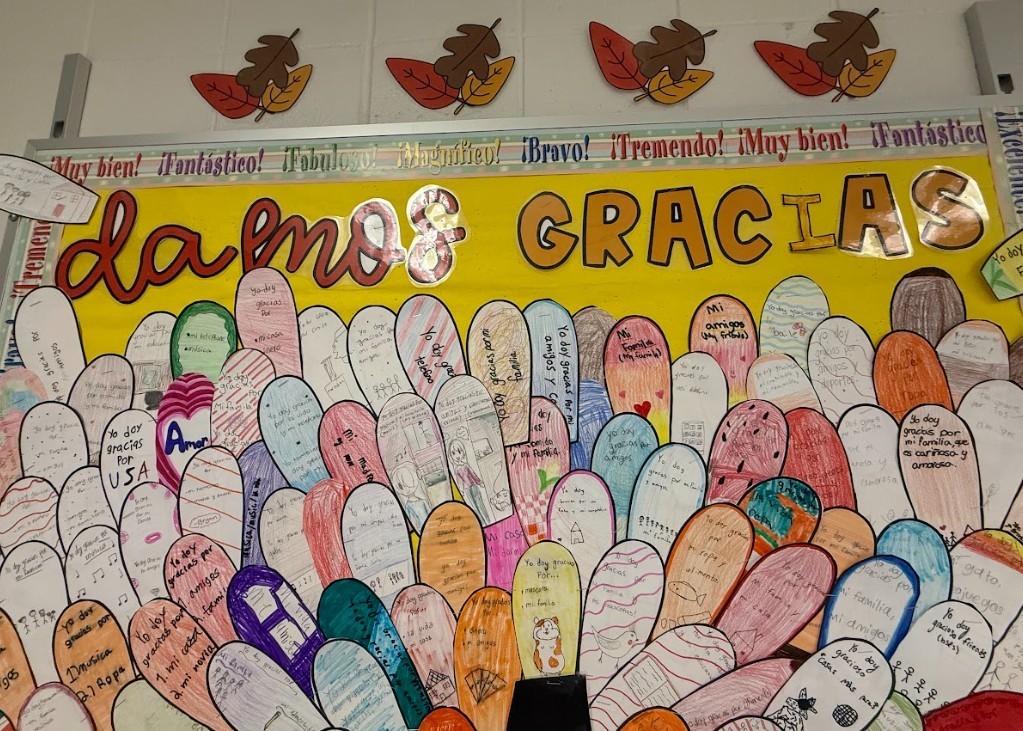
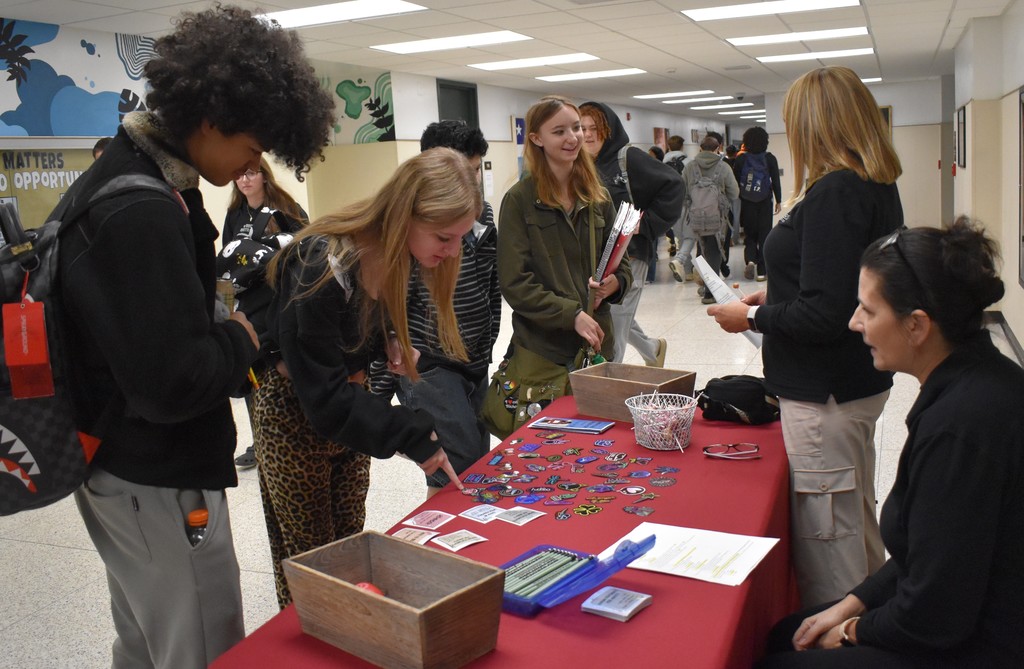
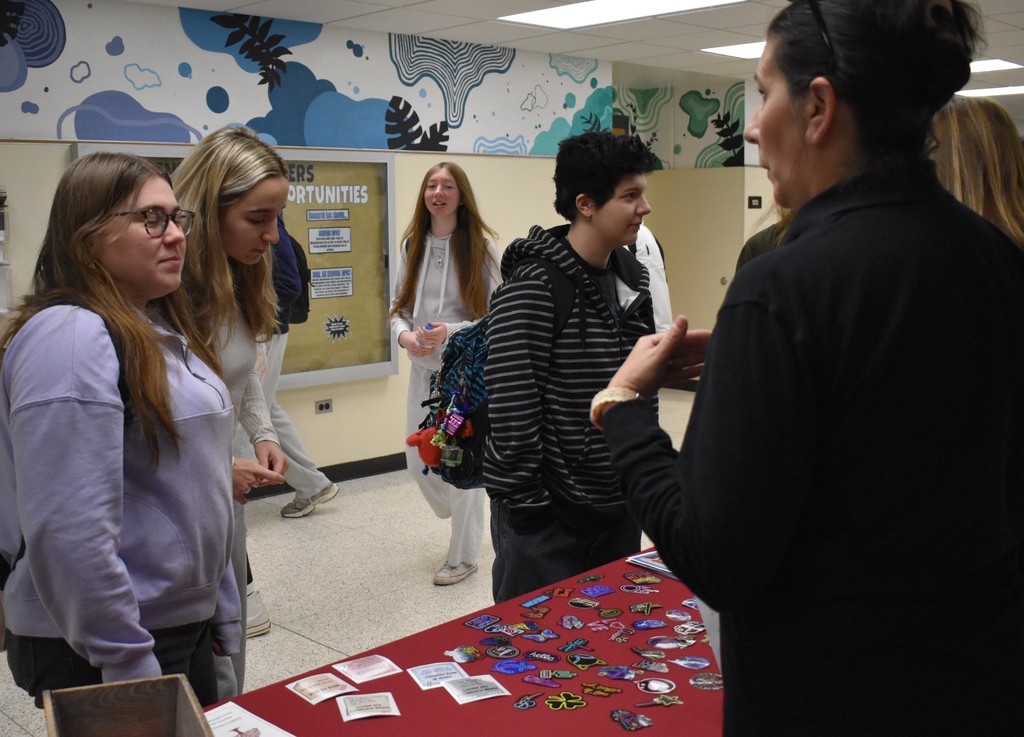
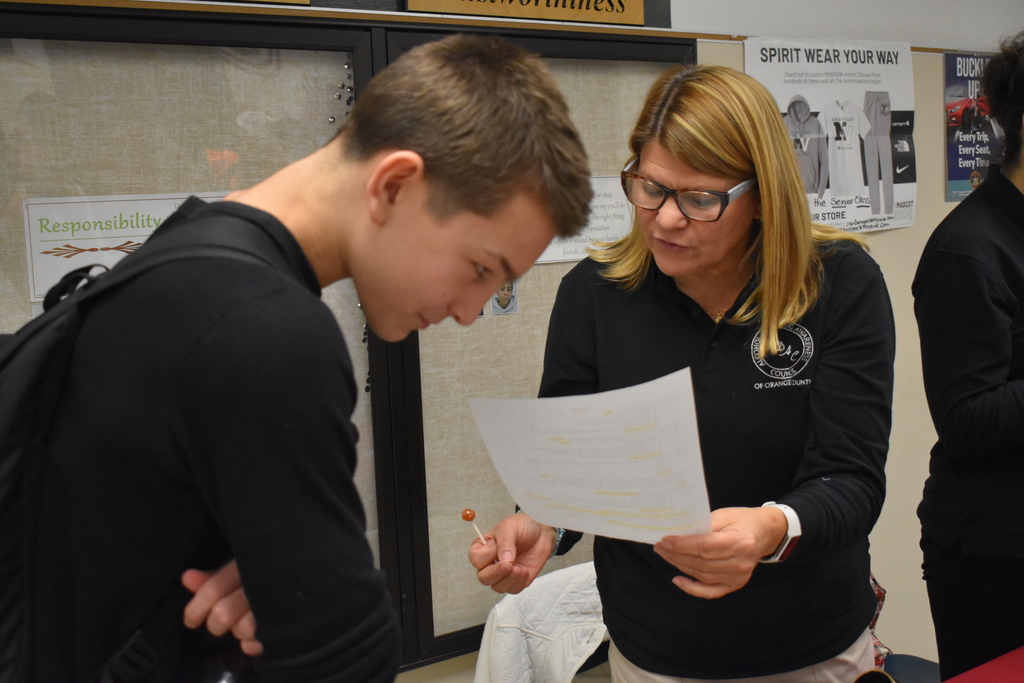
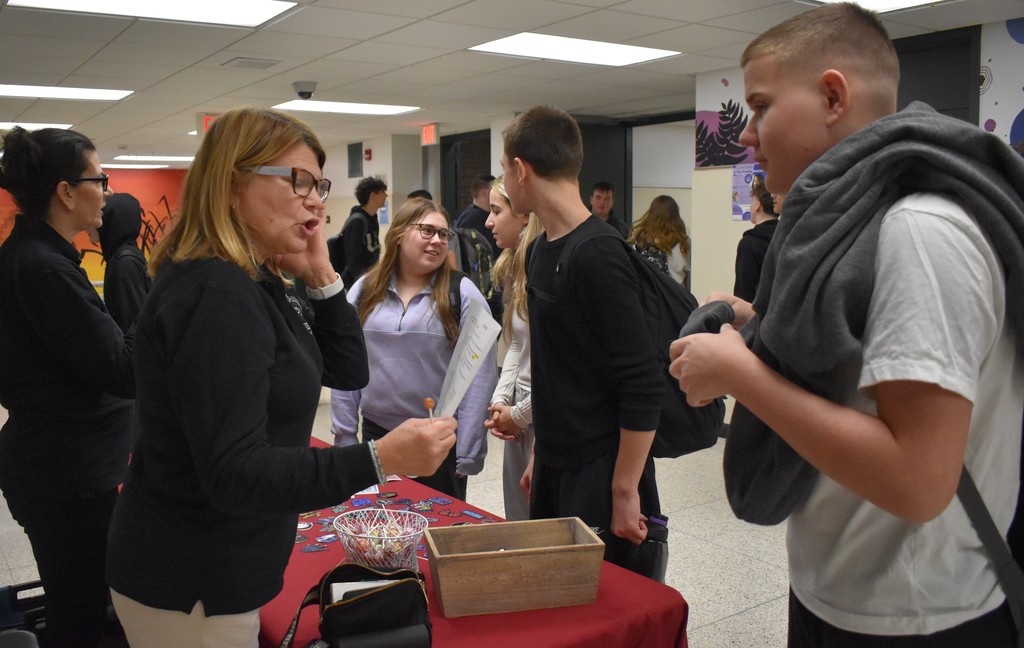
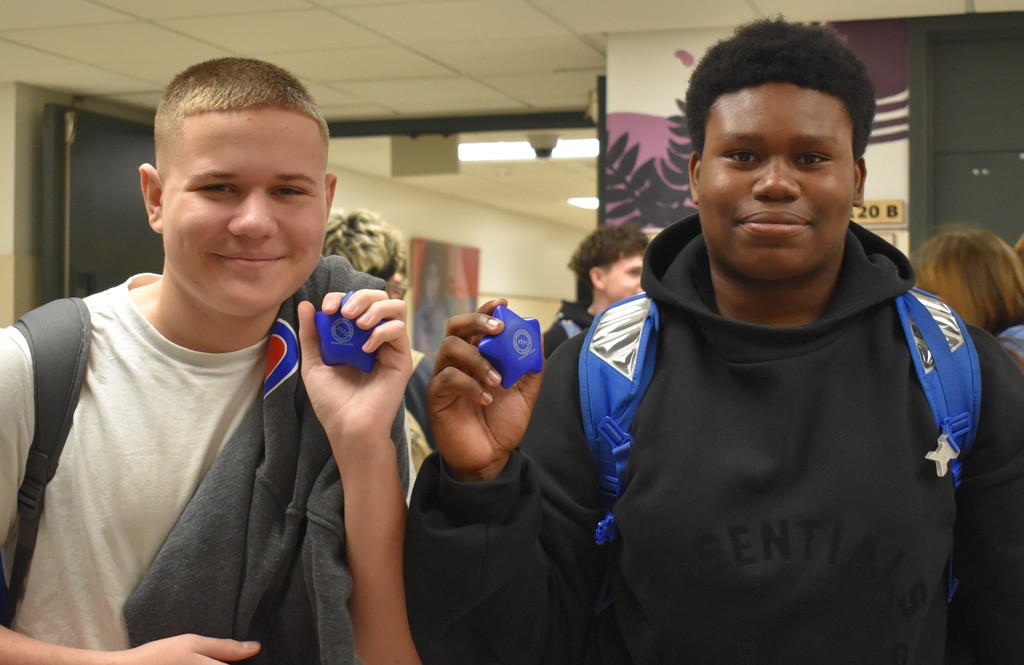
Their seventh-grade students participated in an engaging “Candy Tax Simulation” where they were assigned the roles of British citizens, American colonists, tax collectors, Parliament, and the King. Throughout the activity, the King and Parliament imposed various “taxes” on both the British citizens and the colonists, requiring students to pay their debt using Skittles.
Taxes were levied for everyday situations — such as having a sibling or even wearing socks with Crocs — which helped students understand how arbitrary and frustrating many of the real British taxes felt to the colonists. This hands-on experience clearly demonstrated why the colonists viewed the taxes as unfair and how the lack of representation in British government became a major point of conflict. As students knew, issues like these ultimately contributed to the colonists’ decision to declare independence on July 4, 1776.
This lesson served as an important introduction to their “Road to the Revolution” and “Revolutionary War” units, which are particularly timely as the nation approached its 250th Declaration of Independence anniversary.
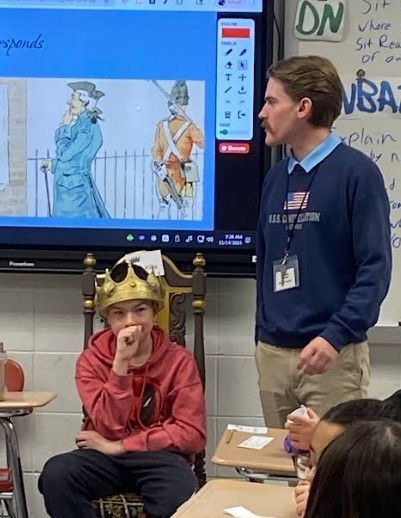
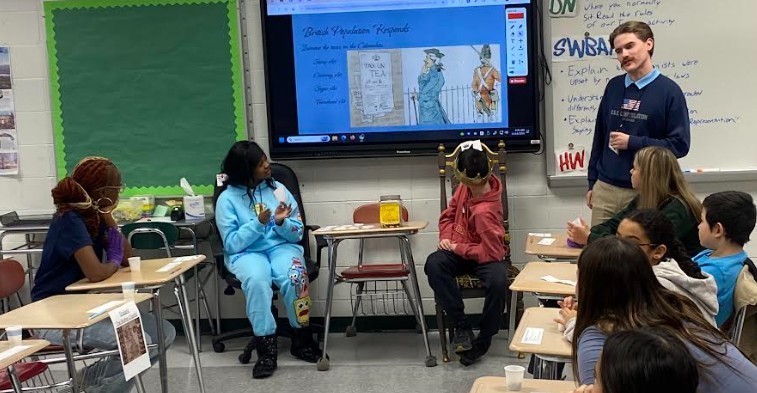
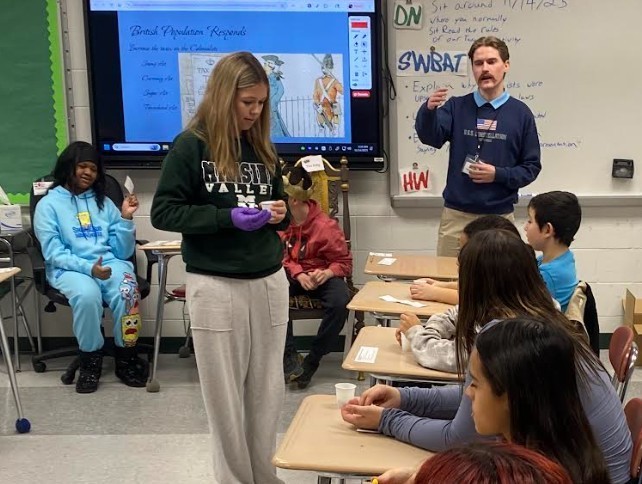
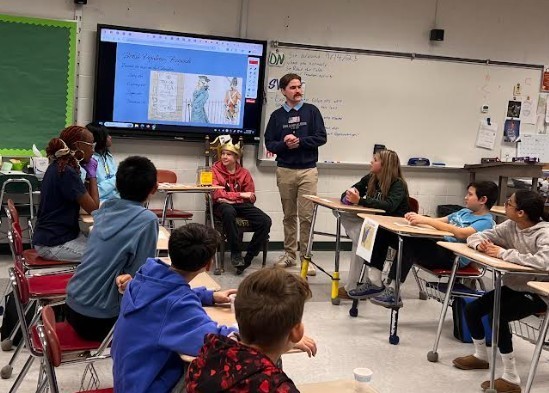
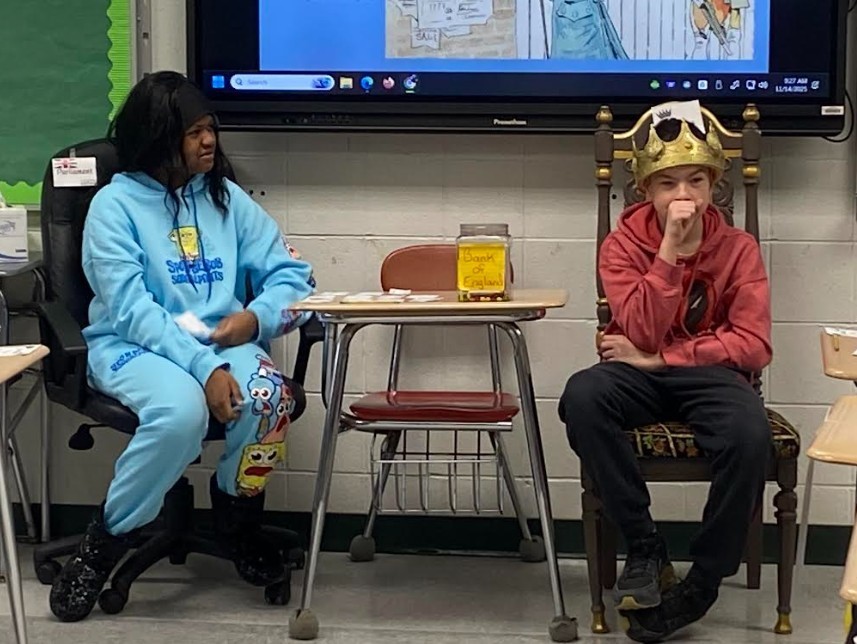
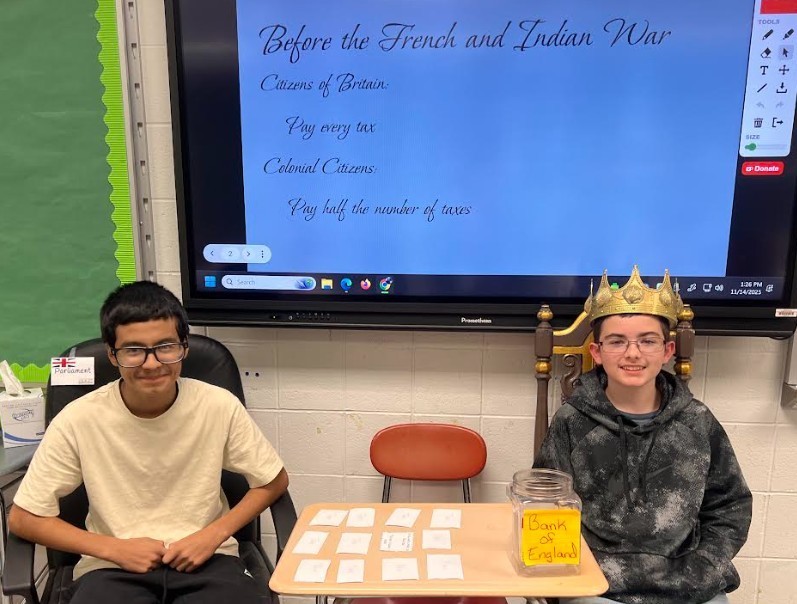
And, a wonderful finishing touch to their studies was the school’s first ever First-Grade Thanksgiving Balloon Parade, held Nov. 24. The entire school took a break from their work to watch these little ones happily show their personal balloon creations and march through the hallways! Take a look!
The energy, cheers and reactions from the school community gave their parade an even more special meaning and was another opportunity for the Otisville school community to come together to make this a shared school event...this time to celebrate the Thanksgiving season and to emulate a very cool parade!
Did you know the very first Macy’s Thanksgiving Parade featured marionette puppets? Live animals from the Central Park Zoo were added but the roaring and growling scared small children. Puppeteer Tony Sarg decided to make large balloons that looked like the zoo animals and moved like his marionette puppets. Students learned the history of the parade as well as how the giant balloons are made. They studied old balloons in previous parades as well as the line up for this year's parade before deciding on what type of balloon they wanted to add to their parade. What a fun, season-appropriate activity!
See more photos on the district's Facebook page!
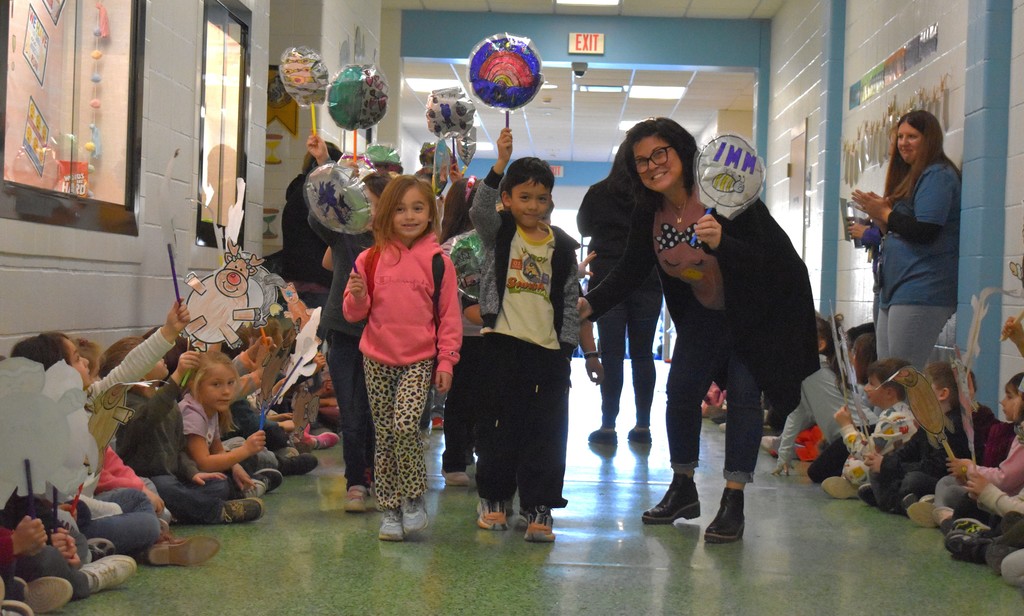
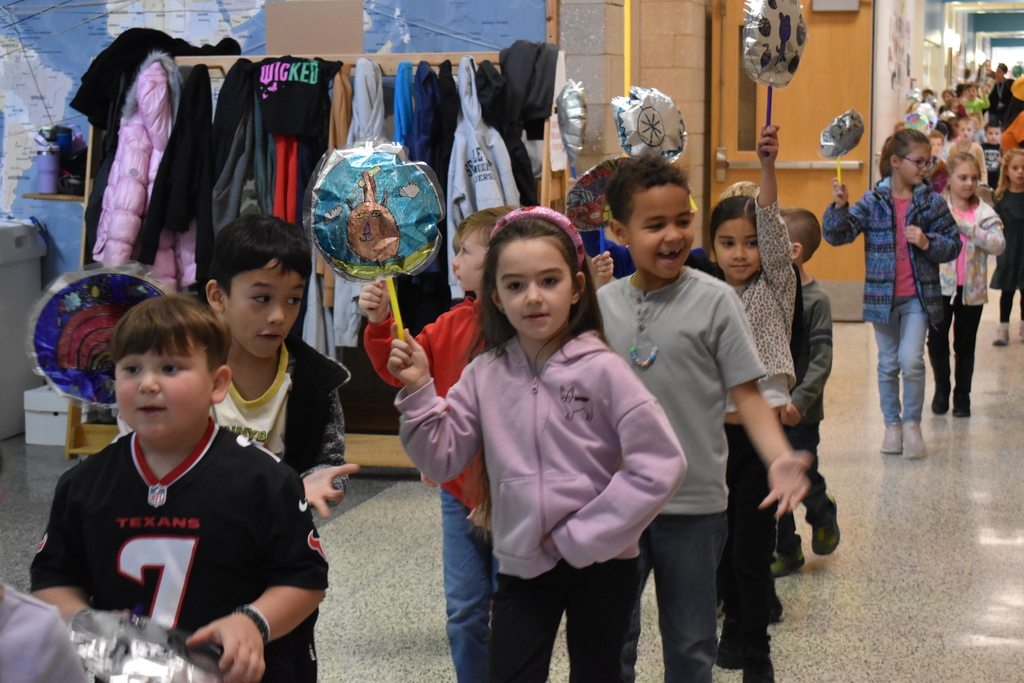
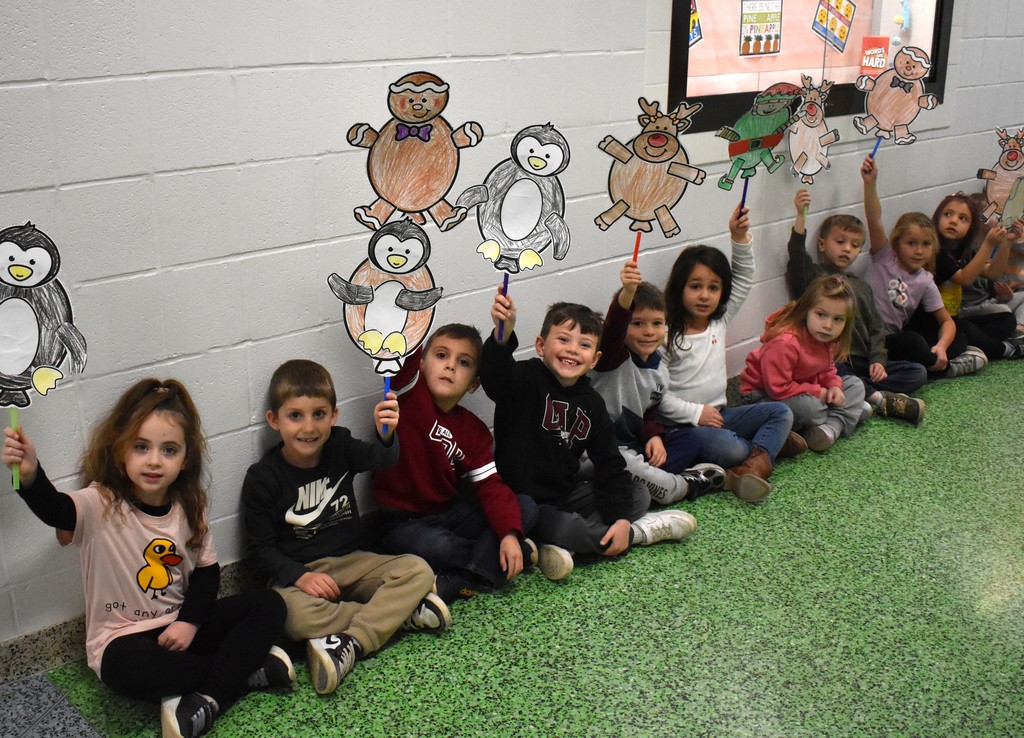
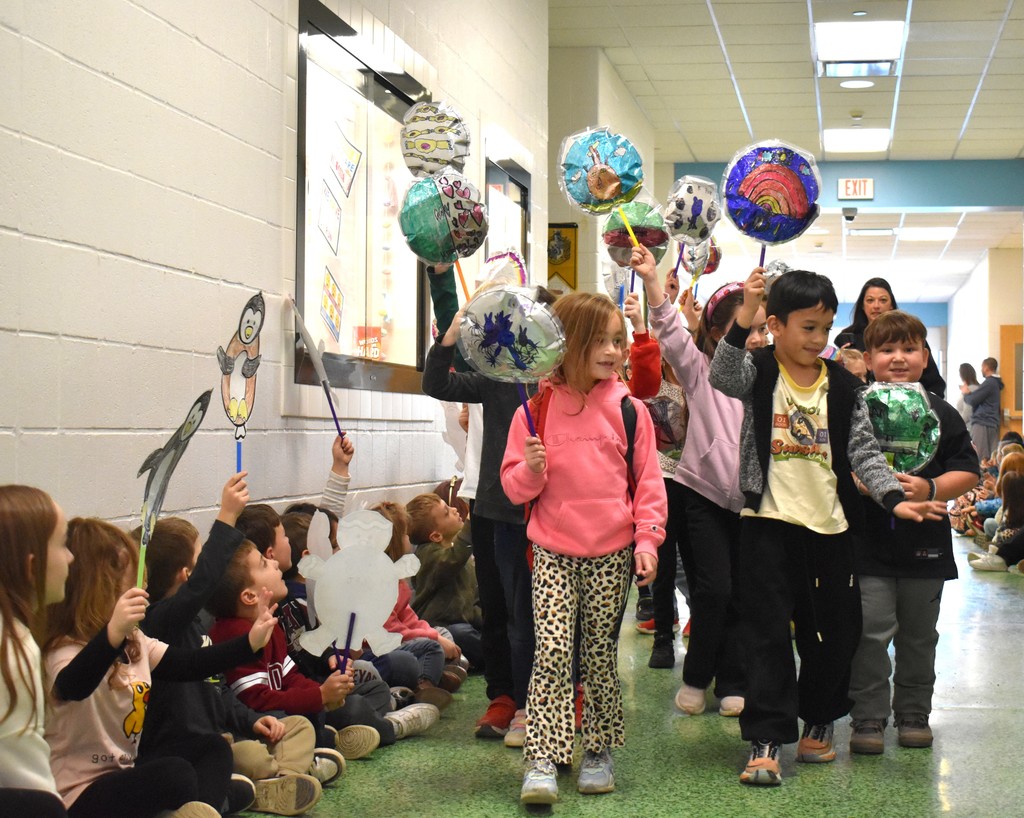
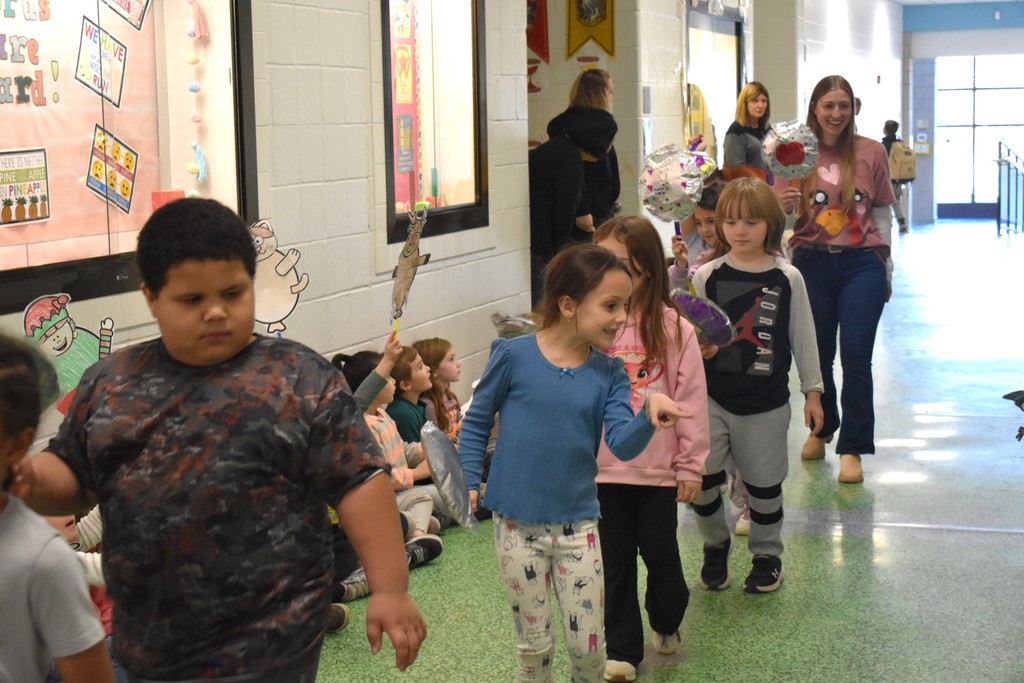
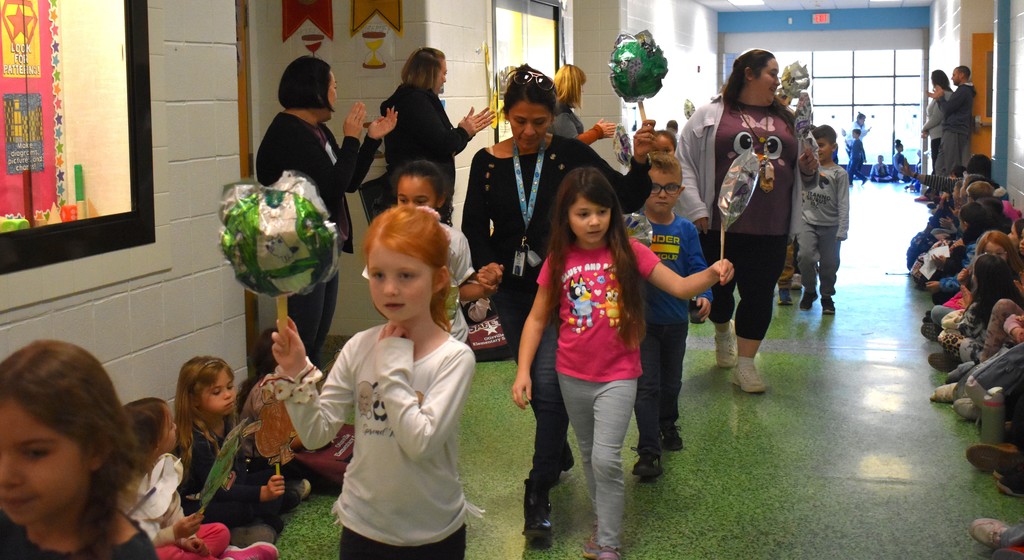
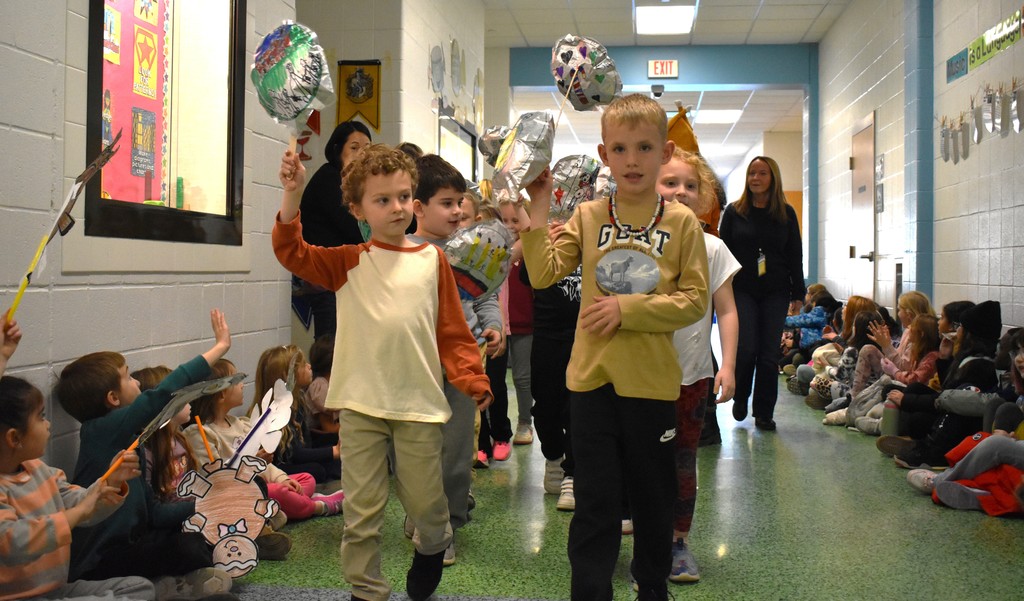
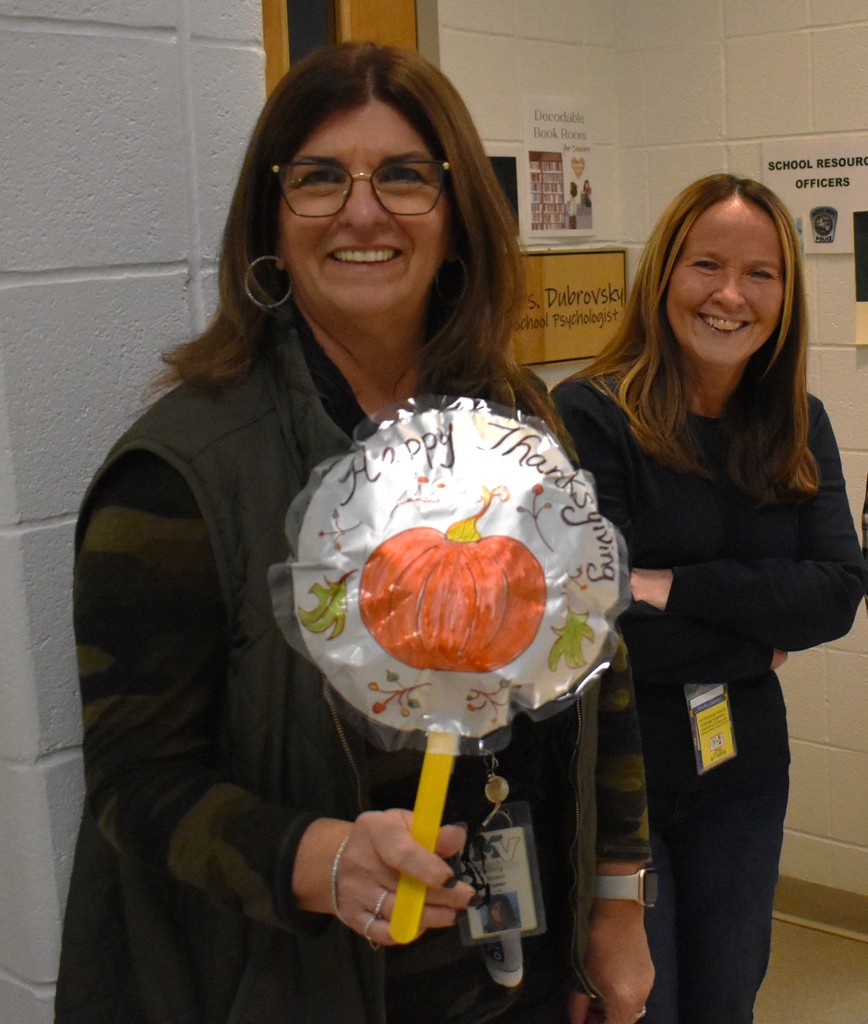
It's important for kindergarteners to understand gratitude because it builds a foundation for empathy, happiness and emotional well-being by teaching these little ones the importance of recognizing and appreciating the kindness of others and the positive aspects of their own lives. Long term, this skill helps them develop into more resilient, less self-centered adults and helps in their social and academic performance. Activities like this are part of the school's and district's ongong character education curriculum.
See more photos on the district's Facebook page!
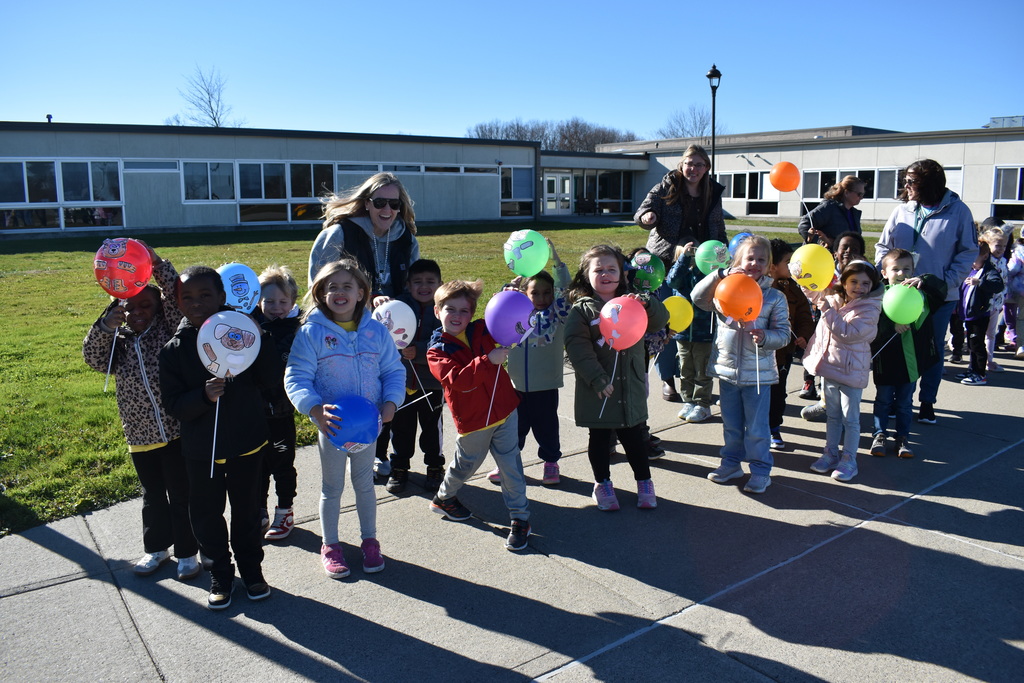
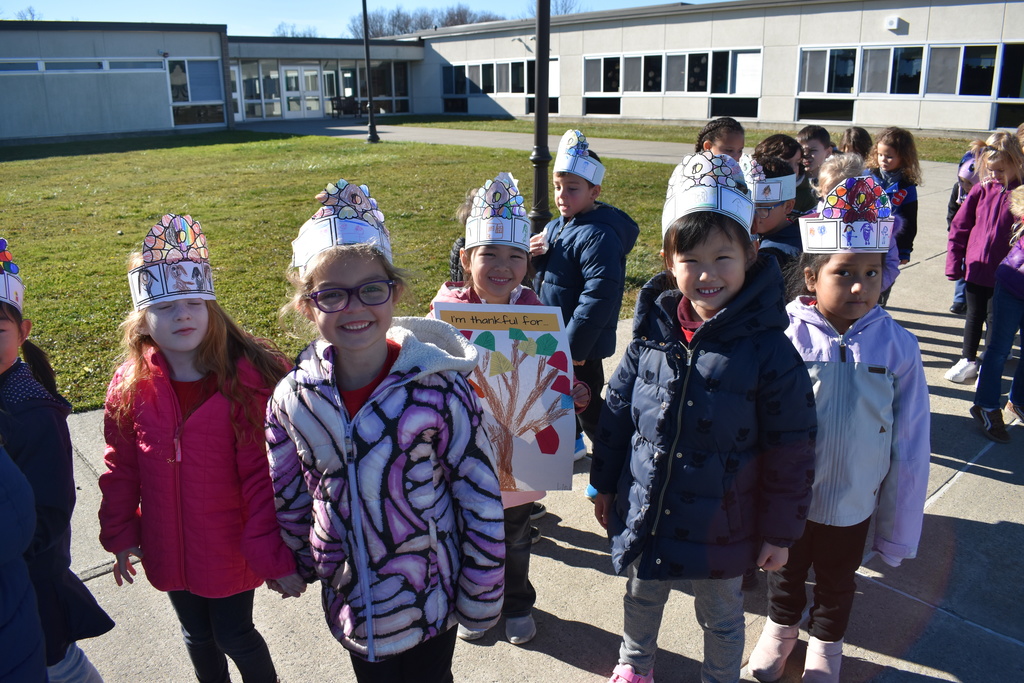
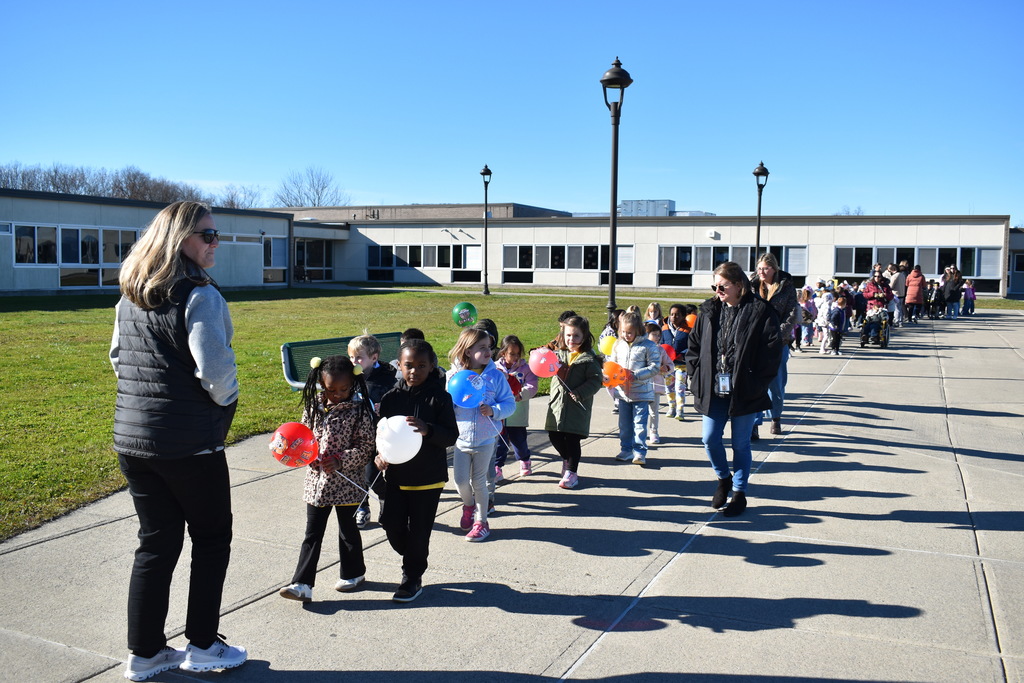
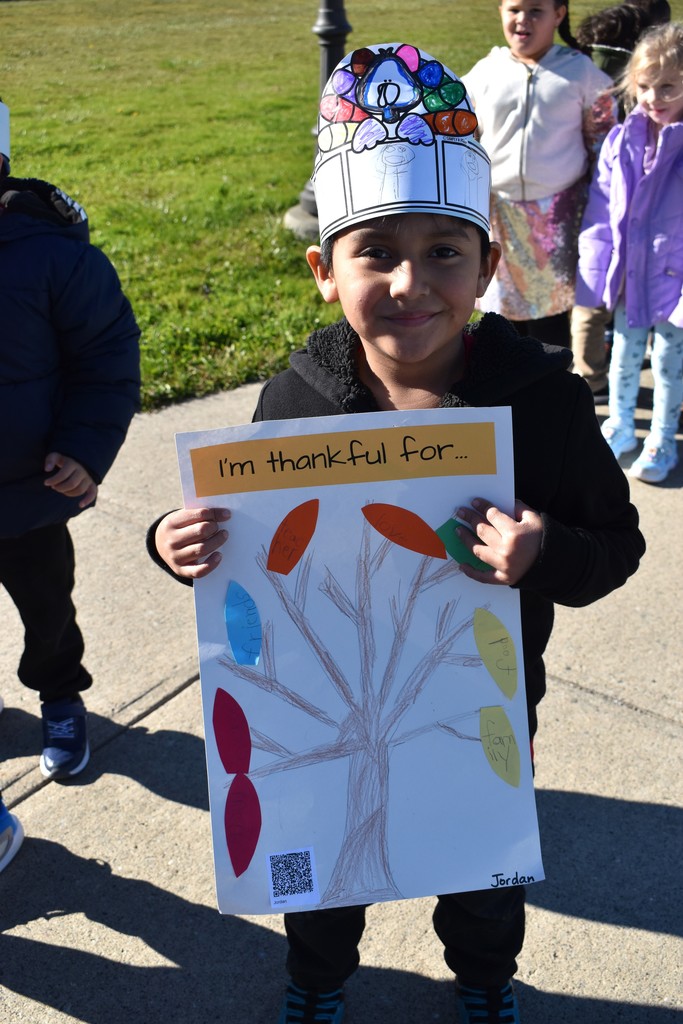
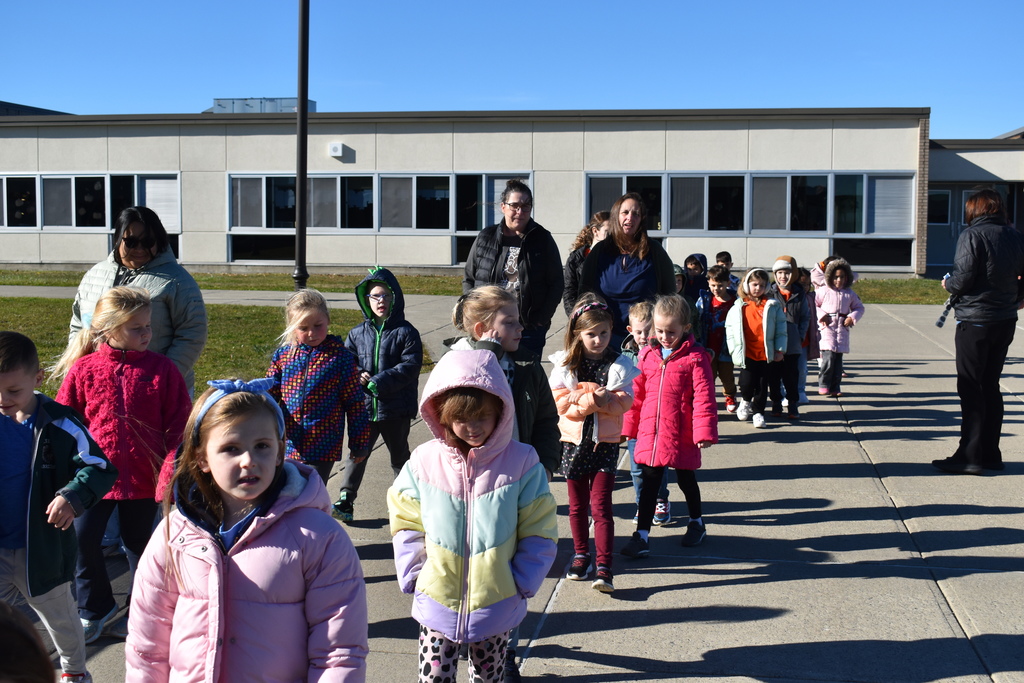
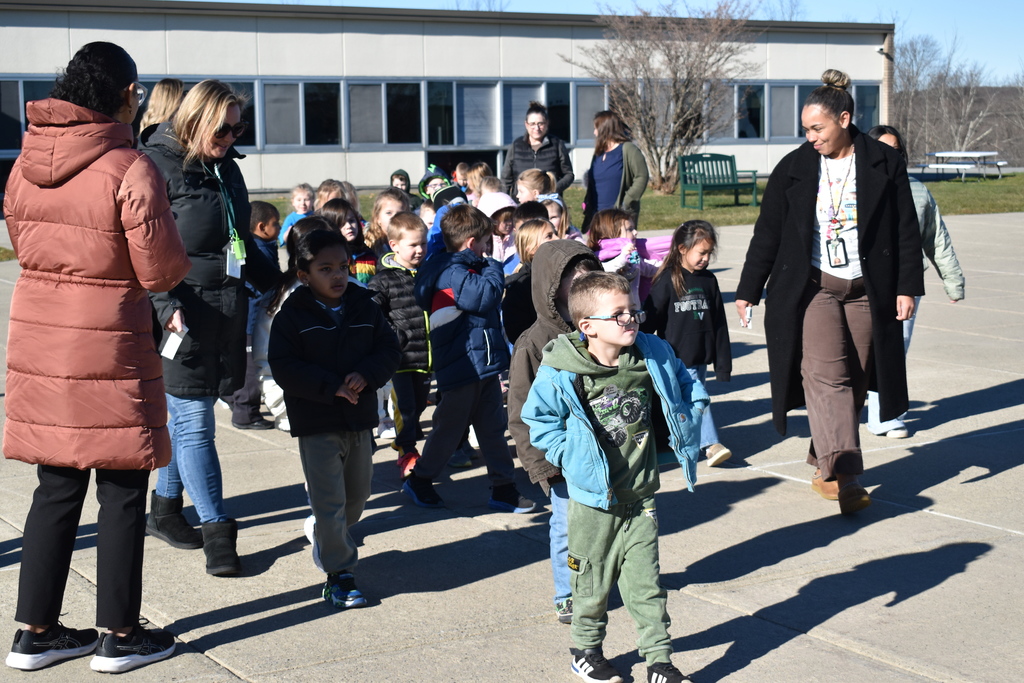
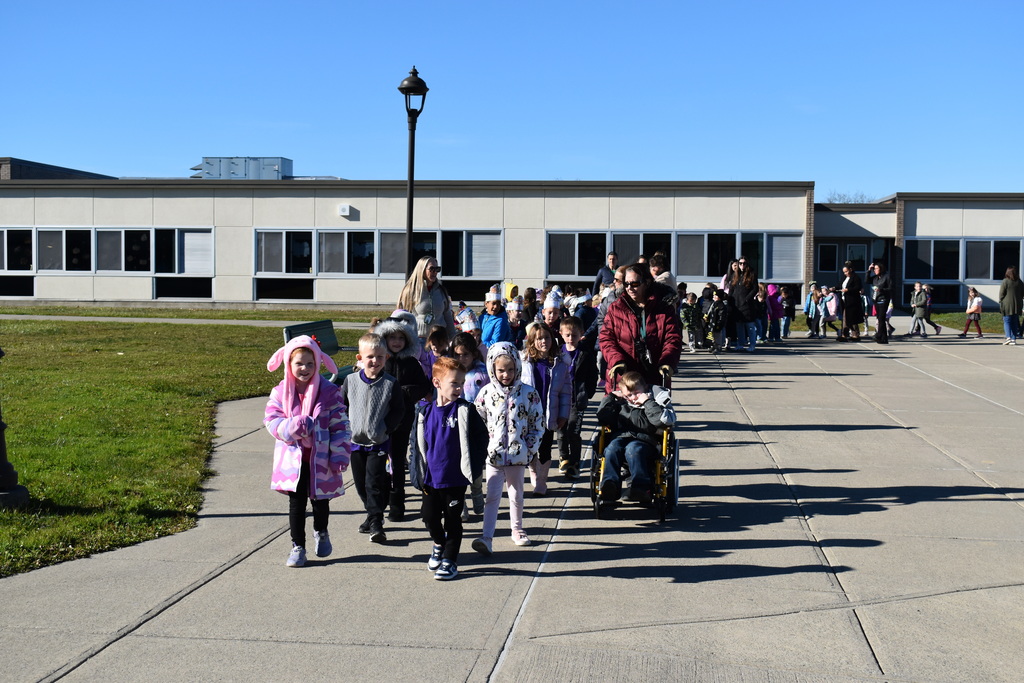
Ms. Ruoti asked students to apply what they had learned about the needs of living things—particularly how plants grow and provide the foods we enjoy—while collaborating closely with their peers in a fun STEM component to their science studies and discussions about Thanksgiving. They were tasked with designing and building a table sturdy enough to support eight gourds. The gourds served as a playful, seasonal stand-in for the plants and vegetables they been discussing in their plant unit.
Gourds (as well as pumpkins and squash) are associated with Thanksgiving mostly because they’re classic symbols of the fall harvest. Because they grow in abundance at that time, they naturally became tied to autumn celebrations. Thanksgiving is all about gratitude and plenty, and a big bowl --- or table --- of gourds visually symbolizes a good harvest and a season of thankfulness.
Once their table was completed, students were tasked with collaborating together again to build chairs for their mini-stuffed animal friends to sit on, so their fuzzy pals could enjoy a good old-fashioned gourd feast! While stuffed animals may “eat” those knobby little decorative gourds, we would not. However, their presence connects back to the history, harvest season and spirit of Thanksgiving!
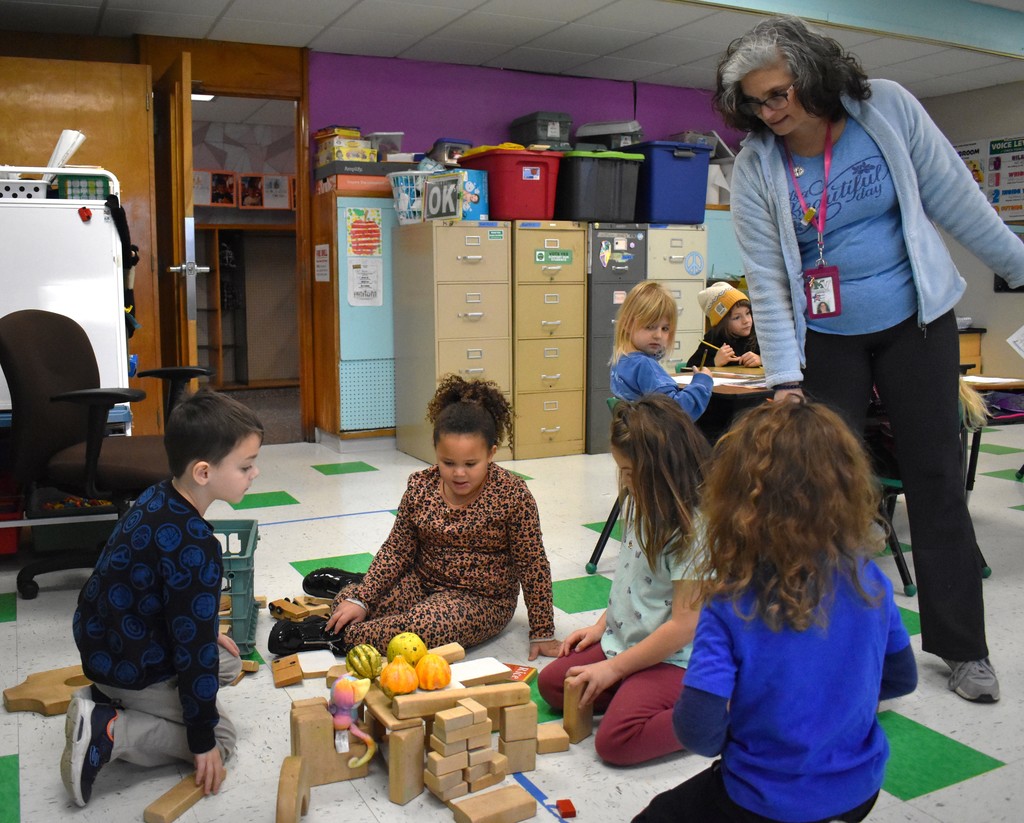
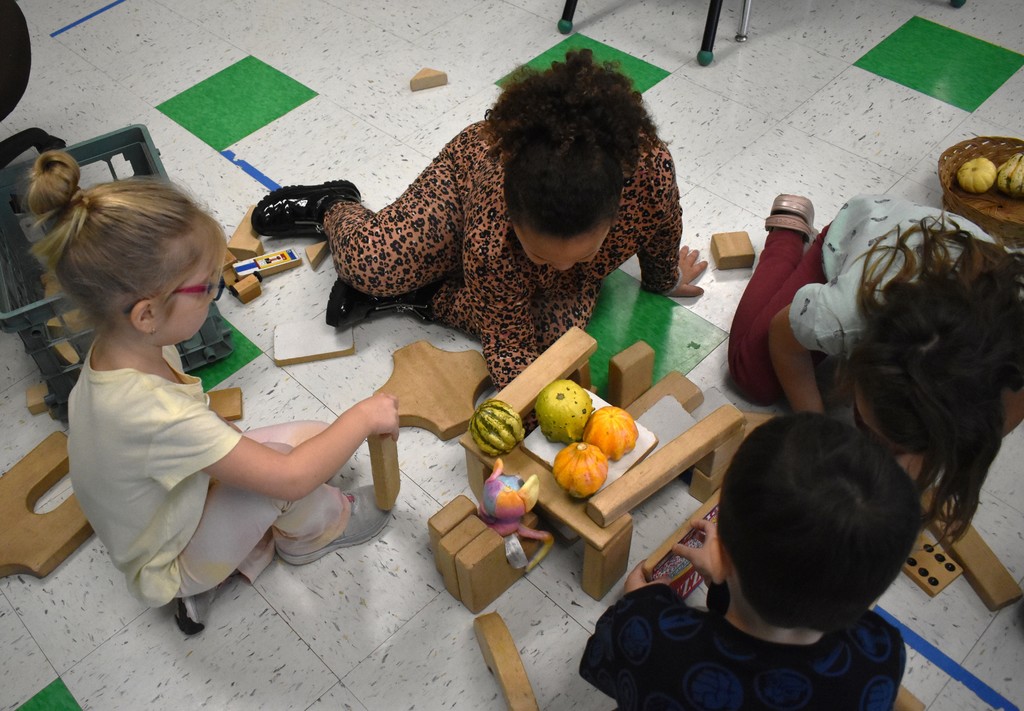
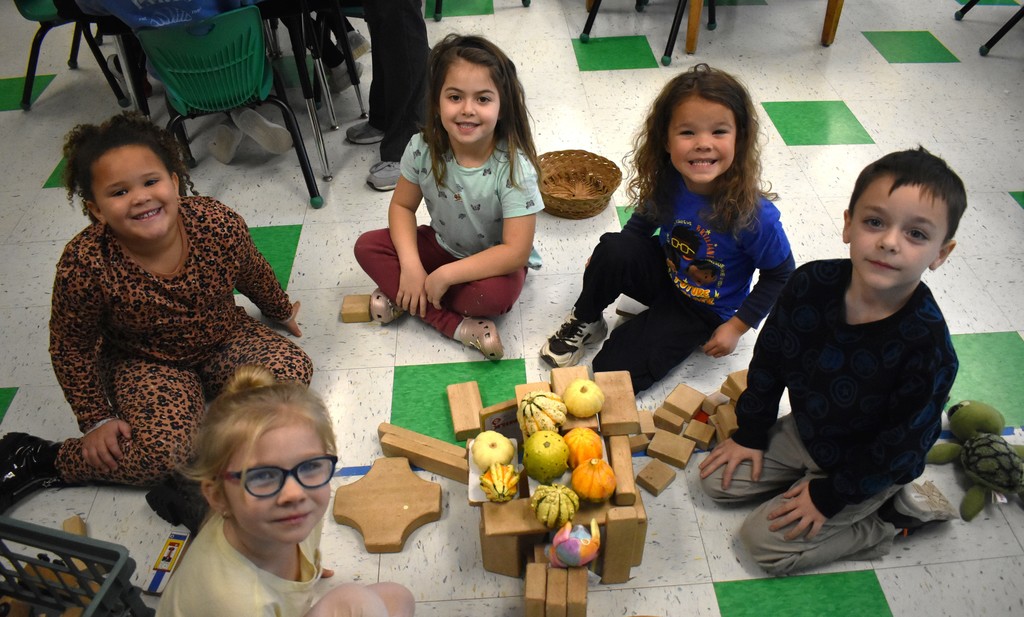
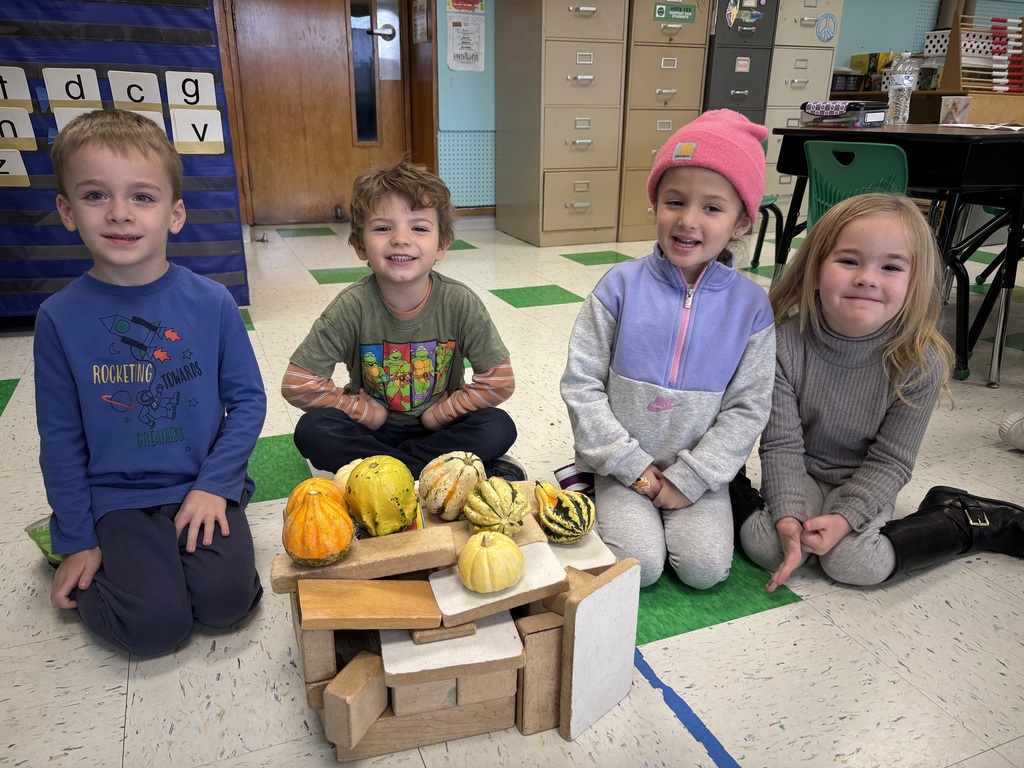
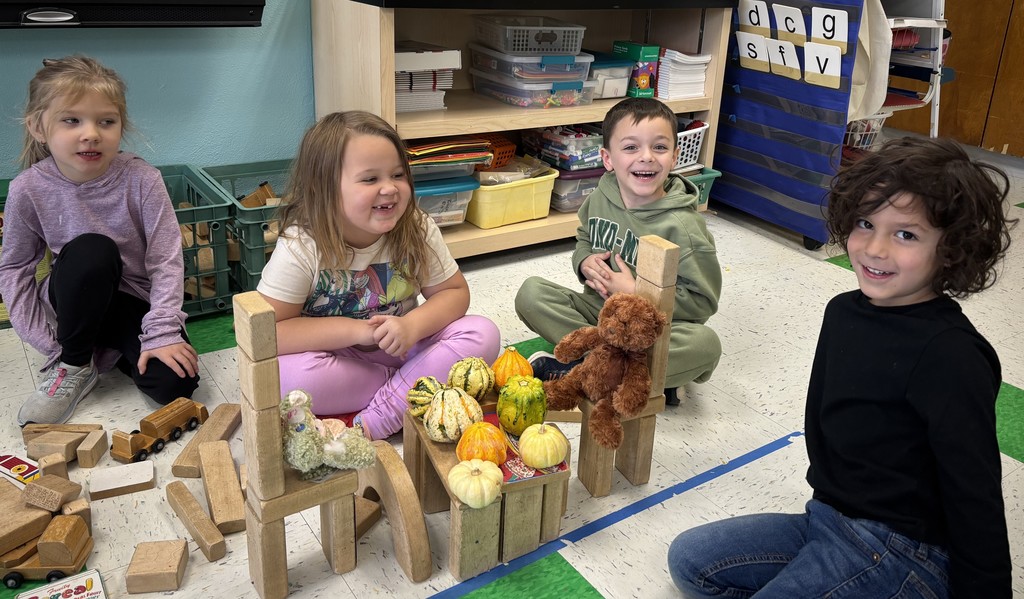
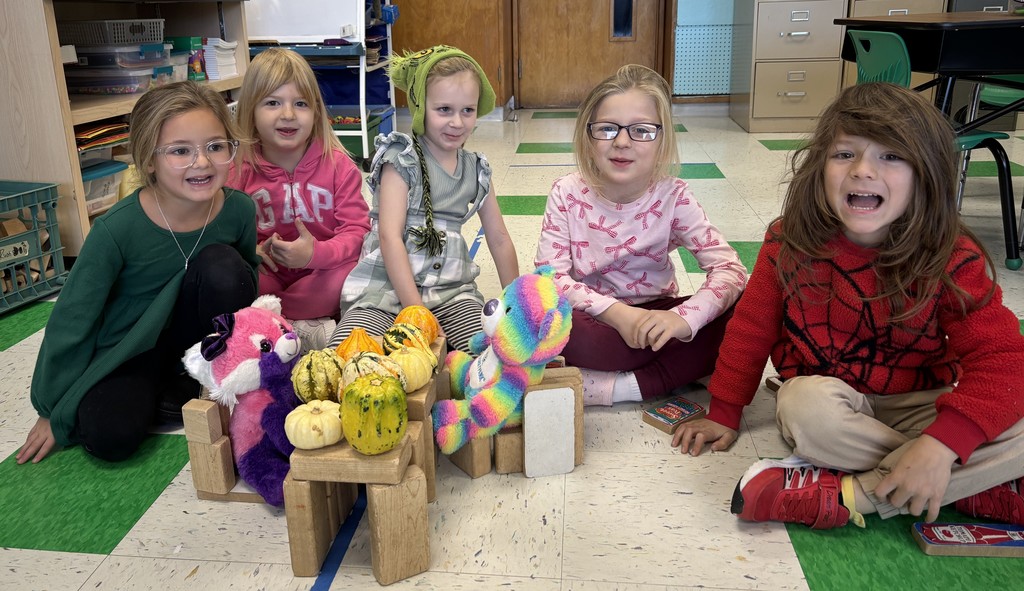
First, students brainstormed about the many people and things they’re thankful for in their lives. Next, they chose the top three things most important to them. Students listed all of the reasons why they’re thankful for each onto an organizer.
Then they created first drafts of their essays, remembering to include an introduction, paragraphs about each topic, and a conclusion. Finally, students edited their work, typed their essays, colored a cover picture, and published them to hang on their lockers for everyone to see and enjoy! Well-done, everyone!
The Expository Essay Format is a very useful writing model for students because it helps them organize their ideas clearly. Understanding how information is organized can help students analyze texts and express ideas more effectively. It’s also thought to be a foundational format for essay students will write as they advance in their academic careers. Standardized writing assessments often require expository essays, so knowing the format increases confidence and performance.
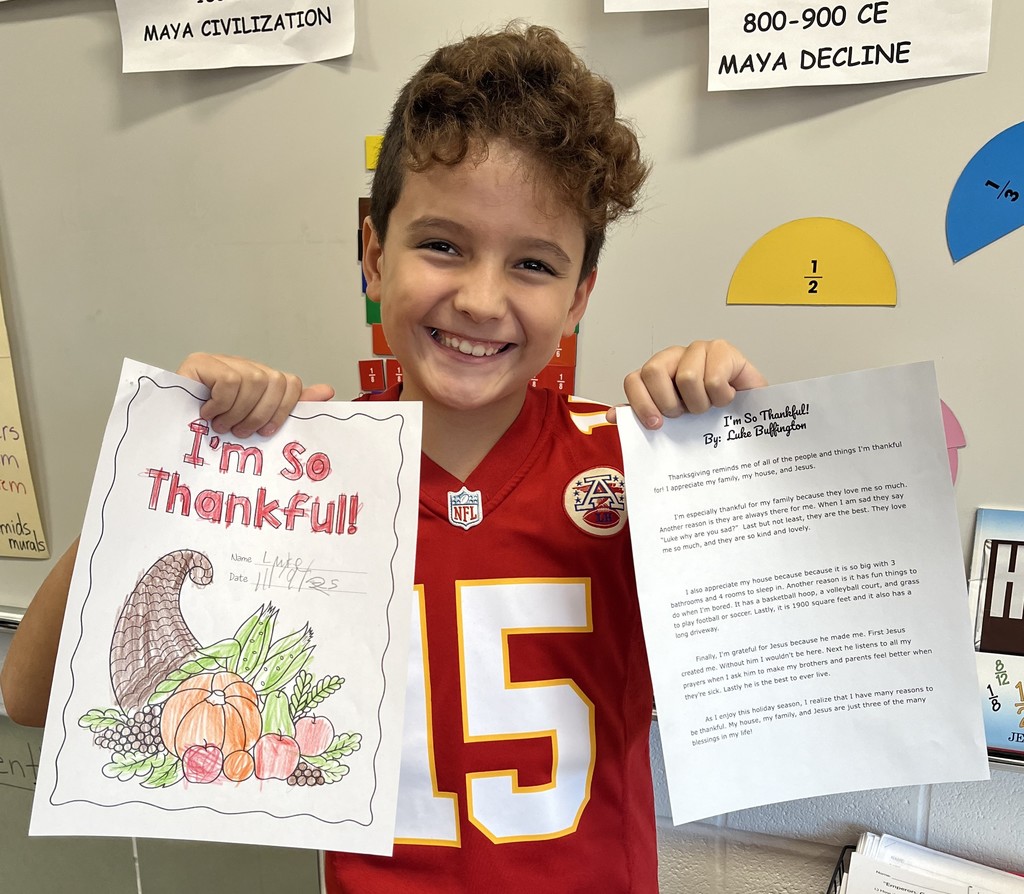
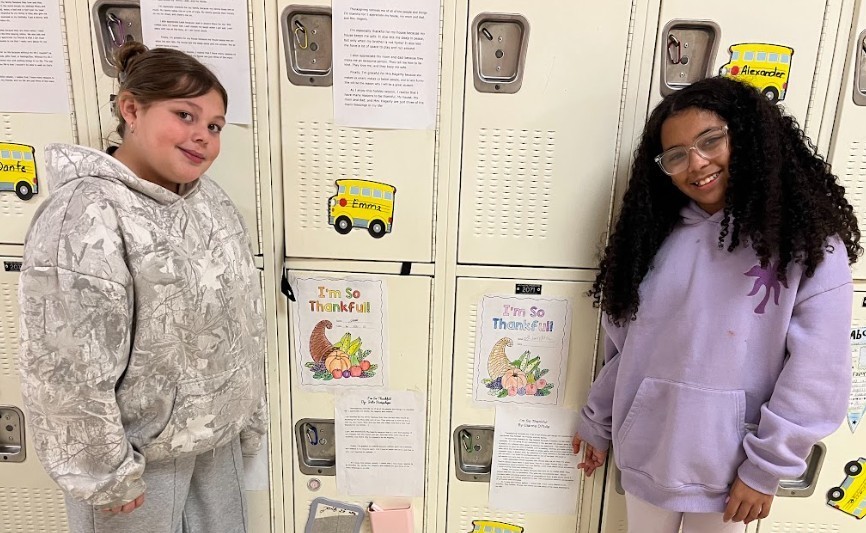
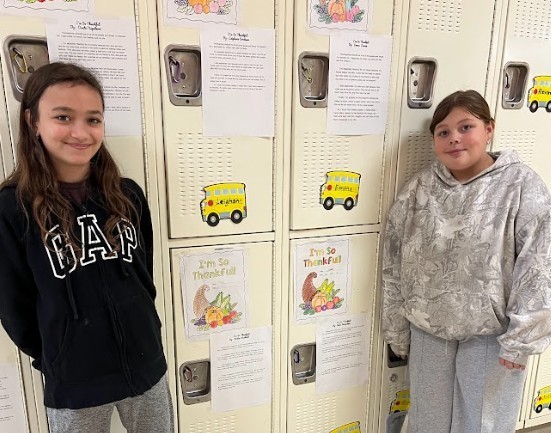
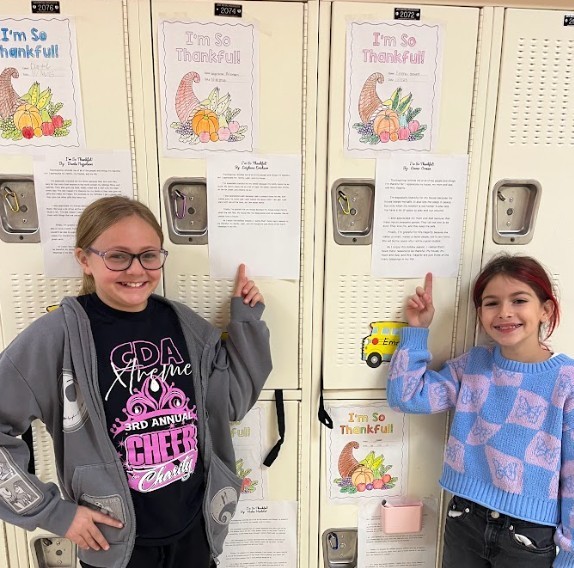
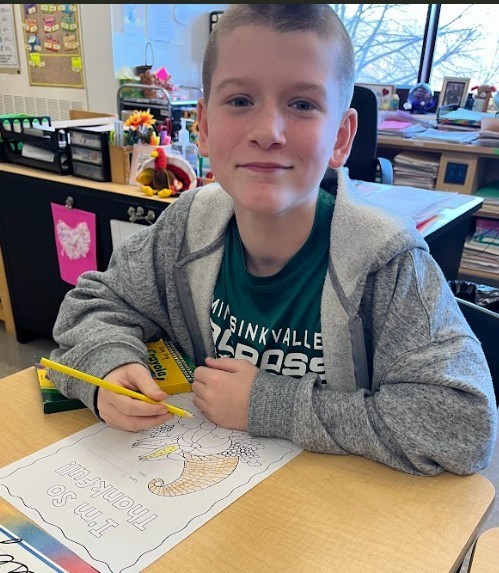
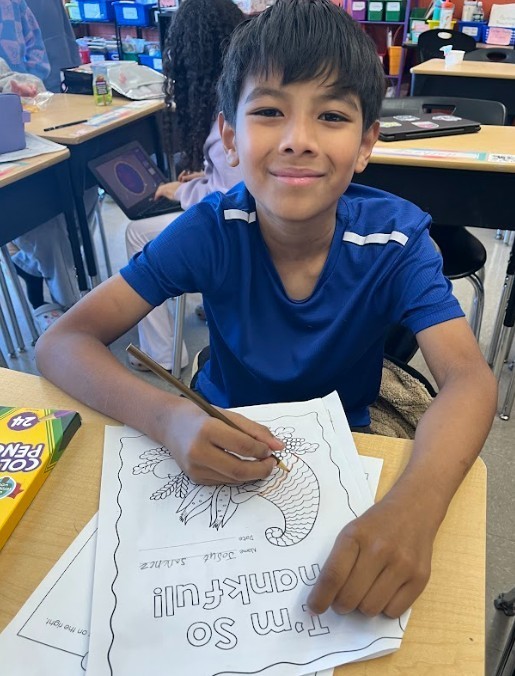
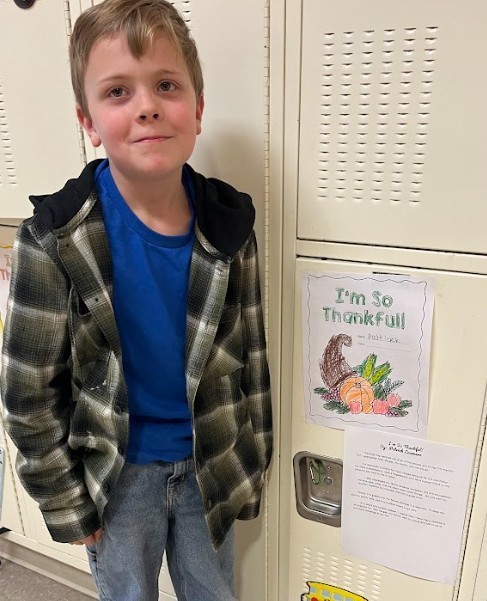
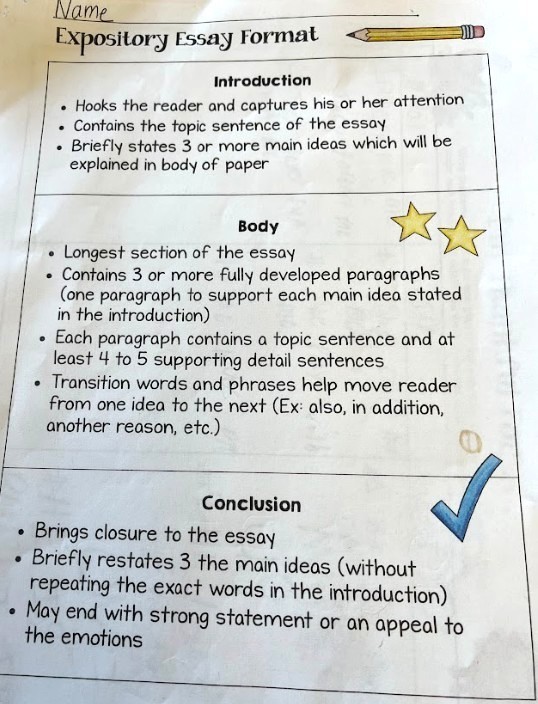
First, everyone talked about what gratitude is and things they are grateful for. Then, Mrs. Guifre tasked them with creating a “Gratitude Wreath.” The object was for teams to work together to create a unique gratitude wreath.
On the start signal, one student from each team rolled the die. The entire team performed the activity determined by the number rolled/exercise identified on the activity card.
The team’s movement “earned” them one item to add to their gratitude wreath. One student from the team went to the center of the activity area and brought one item (bean bag, scarf, deck ring, yarn ball, etc.) back to add to the team’s wreath and says something he/she is grateful for. Every student had a chance roll the die and choose (and place) the item added to the wreath.
Students continued this process until wreaths are complete or until they heard the stop signal. What a creative class combining seasonality and physical fitness!
